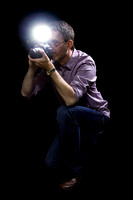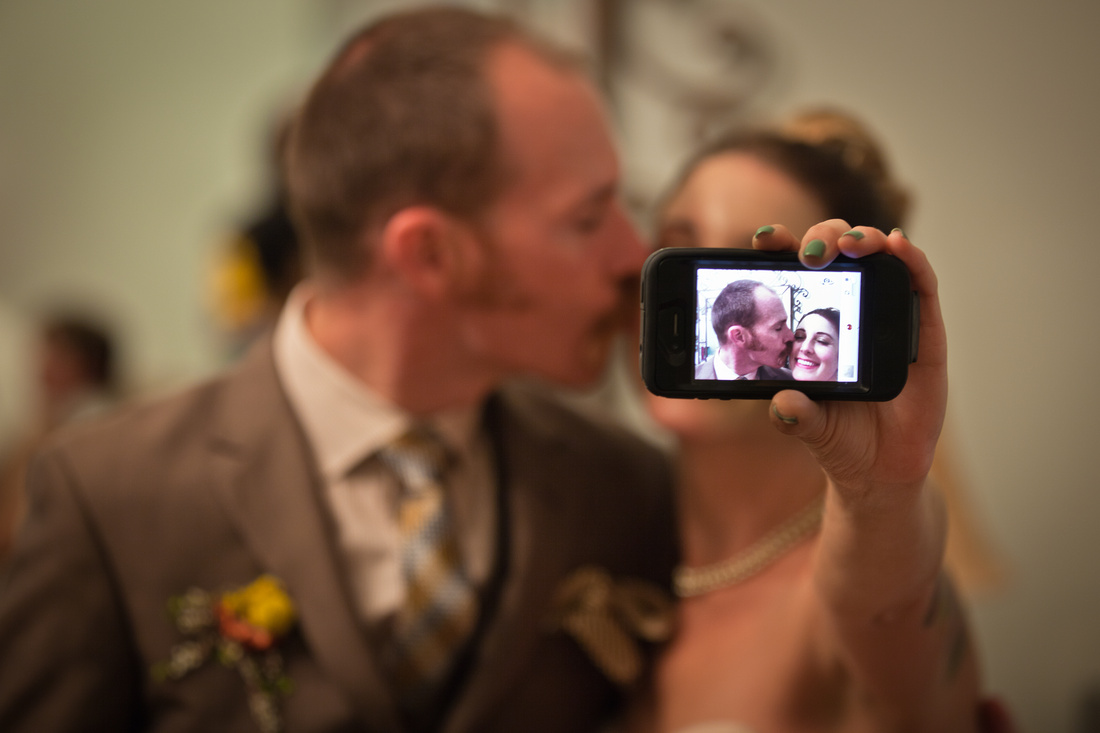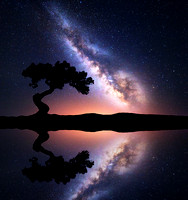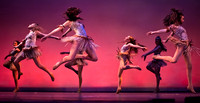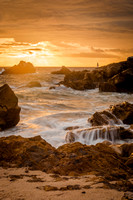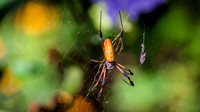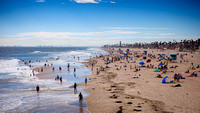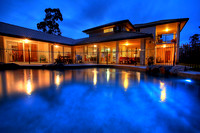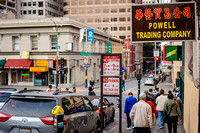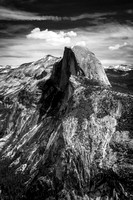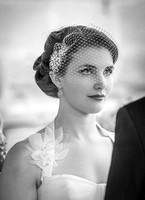
INDUSTRIAL REVOLUTION MIRRORS A.I.'S FUTURE:
Since humankind's birth, we've shown a remarkable knack for inventing and adapting. From the most straightforward farming techniques to the weaving of complex societies, our species has continuously sought to shape our surroundings and bend nature to our whims. But now, as we teeter on the edge of a new age, marked by the swift rise of artificial intelligence and ever more clever machines, it's vital to remember that this isn't the first time we've faced changes so immense they threaten to shake our very foundations. Instead, the ascent of A.I. and the wonders it creates can be seen as a natural progression from the earth-shattering shifts that transpired during the Industrial Revolution - an event that began in the 18th century and turned the world on its head, sometimes in ways that sent shivers down our spines.
The Industrial Revolution, marked by a metamorphosis from farming-based economies to the machine-driven societies we now
 know, set the stage for today's world. However, this monumental shift also conjured fear, uncertainty, and dread. As machines started to replace human toil in industries such as textiles and farming, many folks trembled at the prospect of losing their jobs and the communities they held dear. The notorious Luddite movement sprang forth from these anxieties, with bands of skilled craftsmen rising against the mechanization that threatened their trades and, indeed, their way of life.
know, set the stage for today's world. However, this monumental shift also conjured fear, uncertainty, and dread. As machines started to replace human toil in industries such as textiles and farming, many folks trembled at the prospect of losing their jobs and the communities they held dear. The notorious Luddite movement sprang forth from these anxieties, with bands of skilled craftsmen rising against the mechanization that threatened their trades and, indeed, their way of life.
The similarities between the Industrial Revolution and our current age of artificial intelligence are striking. Now, just as then, we grapple with the implications of A.I. and the effects it may have on our lives. Much like the pioneering machines of the Industrial Revolution, A.I. technologies promise to transform industries, spur productivity, and unveil possibilities we'd never before dared to dream of. Yet the fear of job loss, the decline of human skills, and the moral quandaries that intelligent machines pose echo the worries of those who lived through the earliest days of industrialization.
As we strive to chart a course through the unexplored territory of A.I. and its consequences for our society, we must look to history for guidance. The Industrial Revolution, though peppered with challenges and trials, ultimately led to a more prosperous and interconnected world, thanks in large part to the resilience and adaptability of us humans. The key to harnessing the potential of A.I., just as with the machines of the Industrial Revolution, lies in our ability to balance the rewards and risks, address the genuine fears and concerns that emerge, and ensure that these game-changing innovations serve the greater good.
As connoisseurs of the history of artificial intelligence and the Industrial Revolution, we appreciate that humanity has faced similar crossroads. Thus, we must approach this uncharted terrain with wisdom and foresight. By embracing change and confronting its challenges head-on, we can forge a future where A.I. and other advanced technologies empower us to build a better world, just as the trailblazers of the Industrial Revolution did in their time.
A.I., A NEW MEDIUM IN ART:
The lightning-fast leaps in artificial intelligence haven't just shaken industries and societies and sparked a new epoch of imaginative expression, turning the realms of art and photography on their heads. As connoisseurs of artificial intelligence history
 and the fields of art and photography, we're witnessing the birth of a novel medium that tests the limits of artistic creation, blurs the borders between disciplines, and challenges our assumptions about what constitutes art.
and the fields of art and photography, we're witnessing the birth of a novel medium that tests the limits of artistic creation, blurs the borders between disciplines, and challenges our assumptions about what constitutes art.
Artificial intelligence has created an entirely new art genre, often dubbed AI-generated art or computational creativity. Machine learning algorithms and neural networks craft original and visually delightful works. These groundbreaking methods empower established artists and photographers to dabble in new styles, forms, and techniques and open the door to the creative process, granting those without formal artistic training the opportunity to express themselves in innovative and significant ways.
For example, celebrated writers can tap into A.I.'s prowess to become extraordinary artists, using their familiarity with narratives, symbols, and metaphors to inspire unique visual creations that defy traditional artistic confines. Furthermore, by joining forces with A.I., writers can infuse their works with a visual richness that supplements and elevates their literary skill, seamlessly merging the realms of literature and visual art in unprecedented ways.
Likewise, veteran photographers and artists can supplement their existing knowledge of art styles, composition, and technical aspects, such as the rule of thirds, with the capabilities offered by artificial intelligence. By harnessing AI-based tools and techniques, these creators can push the boundaries of their craft, generating striking images that defy conventional aesthetic norms and introduce fresh perspectives to art and photography.
What's more, the union of A.I. and art holds the potential to produce synergies that can lift the work of both budding and established artists. For example, the immense knowledge of art history and styles ingrained within A.I. algorithms can inspire artists to experiment with new visual languages, drawing on a rich legacy of artistic movements and techniques while infusing their work with a distinctly modern sensibility.
In this brave, new world of AI-generated art, the possibilities are bounded only by the creators' imagination, who can now access various tools and resources to articulate their unique visions. The merging of human creativity and artificial intelligence has revealed a landscape of unexplored artistic territory, urging artists and photographers to continually evolve, adapt, and stretch the limits of their craft.
As experts in the history of artificial intelligence and the spheres of art and photography, this new medium holds enormous promise for the future of creative expression. By embracing the potential of A.I., artists, and photographers can harness the power of cutting-edge technology to produce groundbreaking works and engage in a captivating dialogue with the artistic traditions of the past, forging a new path forward for the world of art.
A FINAL THOUGHT ON A.I. VERSUS HUMANITY:
We've delved into the similarities between the fears and uncertainties accompanying the Industrial Revolution and the trepidations encircling A.I.'s impact on our world today. In reflecting upon these transformative epochs in history, we find ourselves drawn to the words of the enigmatic Willy Wonka, brought to life by the inimitable Gene Wilder, who once declared, "We are the music makers.
 We are the dreamers of dreams." These words serve as a poignant reminder of the immense potential within human creativity and our capacity to sculpt the world around us.
We are the dreamers of dreams." These words serve as a poignant reminder of the immense potential within human creativity and our capacity to sculpt the world around us.
As we teeter on the brink of a new era characterized by rapid advancements in artificial intelligence, we must ask ourselves whether we can harness A.I. as a tool to make music finer and dreams more vibrant. Can we employ this formidable technology to augment our creative capacities and reveal new horizons of possibility? This question, so eloquently posed by Wonka, is central to our collective voyage into the future.
As we wrestle with these uncertainties, another Wonka quote springs to mind: "Oh, you should never, never, doubt what nobody is sure about." This sage counsel reminds us that we must approach the future with humility and an openness to exploration and discovery. Humanity may indeed find itself aboard Wonka's boat, with A.I. evolving at a pace that is both exhilarating and, at times, frightening. As we chart these uncharted waters, we must acknowledge the inherent unpredictability of our course, much like the famous boat scene where Wonka exclaims, "There's no earthly way of knowing which direction we are going... ARE THE FIRES OF HELL A GLOWING, IS THE GRISLY REAPER MOWING? YES, THE DANGER MUST BE GROWING!"
Amid this uncertainty, we must remain unswerving in our pursuit of knowledge and our commitment to ethical and responsible innovation. We must ensure that our dreams don't degenerate into nightmares but serve as beacons of hope and inspiration, guiding us toward a brighter future for all.
In conclusion, the history of artificial intelligence and its parallels with the Industrial Revolution reminds us that we've faced transformative changes and emerged more robust and resilient. As we embrace the potential of A.I., we must take to heart the wisdom of Willy Wonka and approach the future with a spirit of curiosity, humility, and unwavering commitment to ethical innovation. By doing so, we can remain the dreamers of dreams and the music makers, using A.I. as a potent tool to create a better world for future generations.
Thanks for Stopping. Bye,
Randy
]]>
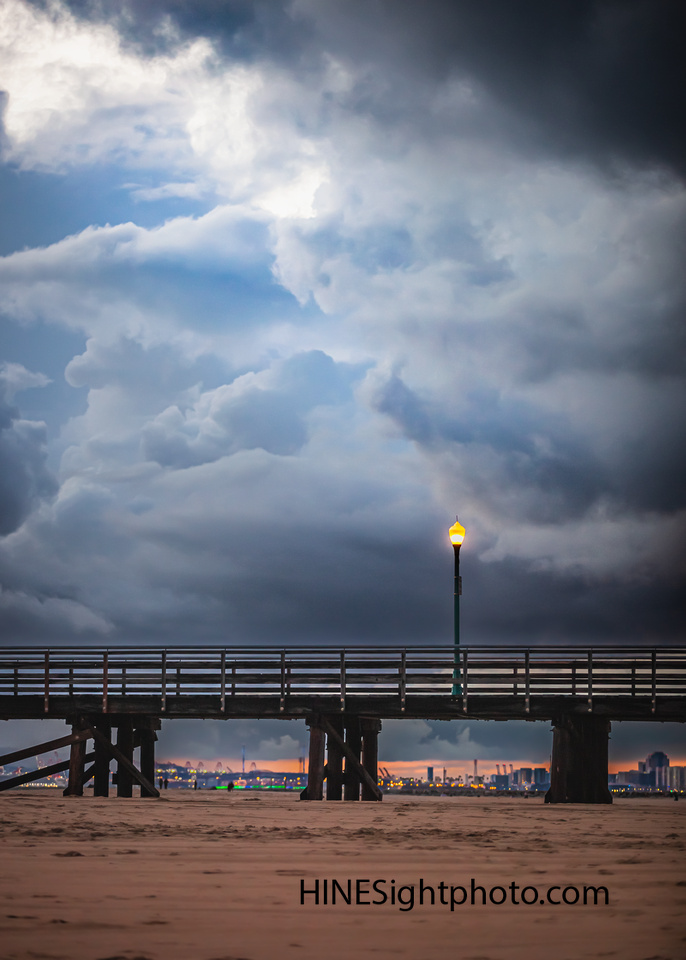
In the lingering embrace of a cold January day, the sands of Seal Beach hold memories of the sun's warmth, the delicate imprints of footsteps a testament to the life that graces its shores. The earth, an unspoken guardian, cradles each grain as it dances in the wind, swirling like the stories whispered by the ancestors who once walked this land.
The pier reaches out, a weathered hand extended toward the horizon, its timeworn planks bearing the weight of countless souls who sought solace in the liminal space between land and sea. The old-fashioned streetlight, a tall sentinel, casts a warm glow on the pier's walkway. Its light is a beacon of hope in the fading twilight. Like the ancient teachings of our elders, the light illuminates a path through the darkness, guiding us with its persistent presence.
As the storm begins to yield, the towering Cumulonimbus clouds hover over the southern California coast, their mighty forms a testament to the power and resilience of the natural world. Their presence echoes the wisdom of the land, a reminder that even amid life's storms, an inherent strength exists within us all.
The pier's wooden pylons stand firm, their steadfast embrace framing the transformation of day into night as the glowing city lights of downtown Long Beach and the ports of Los Angeles awaken in the distance. In this moment of transition, the wisdom of the earth and the ingenuity of humankind converge, their stories intertwining like the roots of a great tree reaching deep into the soil.
In this sacred space, the photograph "Hope's Harbor" captures the essence of our interconnectedness, a reminder that we are all bound by the delicate threads of life that weave us together. As the sun dips below the horizon and the first stars awaken in the sky, the eternal cycles of nature continue to unfold, a dance of light and shadow that whispers of the resilience and hope that reside within each of us.
As we stand at the edge of the shore, looking out upon the vast expanse of sea and sky, let us remember the teachings of the earth that have been passed down through generations. For within the shifting sands, the steadfast pier, and the glowing city lights, we find the enduring strength and wisdom that will guide us through the storms of life, leading us to the harbor of hope that awaits.
]]>
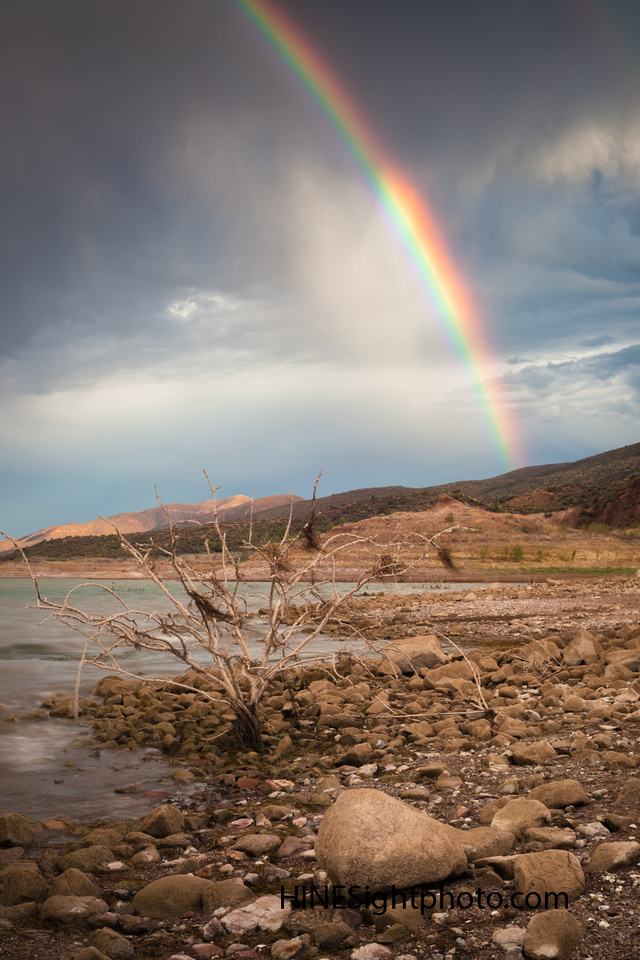
The siren weather alert was blasting through her smartphone, warning of oncoming lighting. She stood frozen at the breathtaking sight of the most colorful rainbow she had ever seen. She quickly set up her tripod to set up a shot of this fantastic monsoon summer day at Lake Roosevelt.
As the siren weather alert blared from her smartphone, a mix of excitement and apprehension coursed through Samantha. She knew that oncoming lightning could be dangerous, but the sight before her was too incredible to pass up. The vibrant rainbow arching over Lake Roosevelt was the most intense and colorful she had ever seen, a testament to the power of the summer monsoon.
Her heart raced as she quickly set up her tripod, trying to steady her hands as she adjusted her camera settings. Time was of the essence, and Samantha knew she had to work fast if she wanted to capture the mesmerizing scene before her. The dark, stormy sky served as a dramatic backdrop for the brilliant colors of the rainbow, and the lake's choppy waters seemed to mirror the electric energy in the air.
Samantha's pulse quickened with each rumble of thunder in the distance. The threat of lightning loomed large, but she couldn't tear herself away from the beauty unfolding before her. The combination of the storm and the vibrant rainbow was a photographer's dream, a rare and captivating moment she couldn't resist capturing.
As she snapped photo after photo, Samantha was acutely aware of the danger she was in. But the stunning images she was capturing fueled her determination to make the most of this extraordinary opportunity. Her passion for photography and desire to share the world's beauty with others drove her to push through her fear and continue shooting.
Finally, as the last remnants of the rainbow faded, Samantha quickly packed her gear and retreated to a safer location. Her heart was still pounding. She couldn't help but feel a sense of exhilaration as she reviewed the breathtaking images she had captured. Despite the risks she had taken, she knew her photographs of that incredible summer monsoon day at Lake Roosevelt would be among her most treasured works, a lasting reminder of nature's raw beauty and power.
]]>
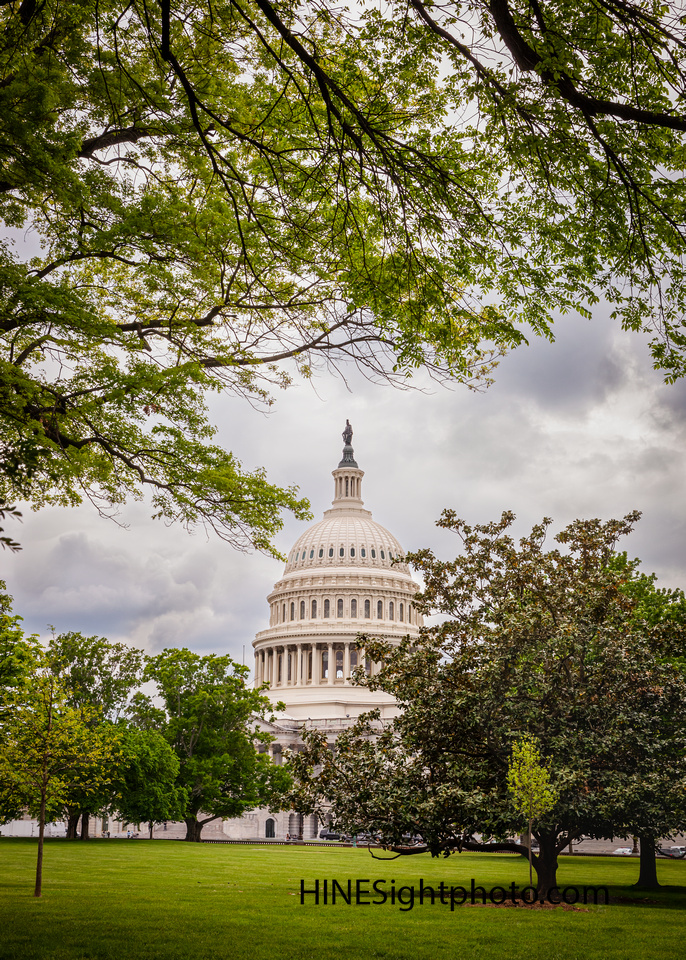
In the tender embrace of early spring, we stand at the "Threshold of Liberty," where verdant hues of hope and renewal stretch out before us. Through the interlaced branches, new leaves unfurl with the promise of brighter days, an offering from the land, as if to say, "Do not lose heart, for life continues." The Washington Capitol building dome, a beacon of democracy, rises in the distance, shrouded by dark clouds—symbolic of the trying times our republic navigates. Yet, we remember the words of Thomas Jefferson: "The tree of liberty must be refreshed from time to time with the blood of patriots and tyrants."
Crowning the dome, the Goddess of Liberty stands tall, an eternal reminder of the values our nation cherishes. George Washington once said, "Liberty, when it begins to take root, is a plant of rapid growth." She watches over us, urging us to hold fast to our freedoms and echoing the sentiments of Benjamin Franklin: "Where liberty dwells, there is my country."
This living tableau, a harmonious interplay of life's cycles and human ideals, tells us of resilience and perseverance. It calls forth the wisdom of John Adams, who proclaimed, "Liberty cannot be preserved without general knowledge among the people." And so, we take heart in the regenerative power of nature and the timeless words of our founding fathers, recognizing that the roots of liberty run deep and the branches of freedom continue to reach for the sky.
]]>

In the tranquil moments of twilight, a masterpiece unfolds at Huntington Beach, where the sky weaves a tapestry of golden hues above the cliffs. Amidst this breathtaking panorama, Oil Rig Eva is a testament to human ambition. Her work lights ablaze in a symphony of white, orange, and red, their luminescence reflecting upon the mighty Pacific.
The calm ocean cradles Eva in its dark gold embrace, a tender partnership that bespeaks the intricate relationship between industry and the natural world. The waters, serene and untroubled, whisper their secrets to the rig as it delves deep into the Earth's heart for the magical mud known as oil, the lifeblood of our modern age.
As the day wanes, the short silhouette of Catalina Island emerges, only to be slowly consumed by the advancing marine layer. This dance of presence and absence, substance and shadow, reminds us of the transitory nature of our existence on this Earth. Above, the sky is a canvas upon which clouds of every form – from low whispers to the high cirrus – play out their aerial choreography. Together, they pay homage to the ever-changing beauty of our world.
Roughneck's Sunset at Oil Rig Eva is a portrait that captures the delicate equipoise between humanity's insatiable quest for progress and our profound reverence for the splendor of nature. In this particular image, the ceaseless rhythm of life – from the roughnecks' tireless work to the tides' ebb and flow – is celebrated in a symphony of light and shadow, sea and sky.
]]>

In "Dawn Patrol's Dark Side," we are invited to witness the intimate communion between the surfer and the vast sea, a relationship forged by respect and humility. The solitary figure, cradling his longboard, stands in the gentle embrace of the ocean's tide as if to offer silent gratitude to the water's gracious gifts. The fantastic December morning serves as a reminder of the cycles of life and the fleeting beauty of each moment as the sun rises to illuminate the intricate tapestry of the bluest sky and the fleeting dance of the dream-like clouds.
The surfer stands at the edge of the known and the unknown, where the infinite horizon beckons with the promise of adventure and the whisper of wisdom. In this liminal space, he is both student and teacher, a humble seeker of the ocean's teachings and a steward of its mysteries. The photograph captures this delicate balance as the surfer gazes out toward the horizon, poised to embrace the lessons that the waves may offer.
As the sun ushers at the end of another dawn patrol session, the image invites us to contemplate the interconnectedness of all life and the deep kinship between humanity and the natural world. The surfer's silhouette, a testament to the human spirit's resilience, echoes the ocean's resilience, an eternal dance between strength and vulnerability. In "Dawn Patrol's Dark Side," we are reminded that we are all, in our way, both guardians and beneficiaries of the Earth's precious gifts.
]]>
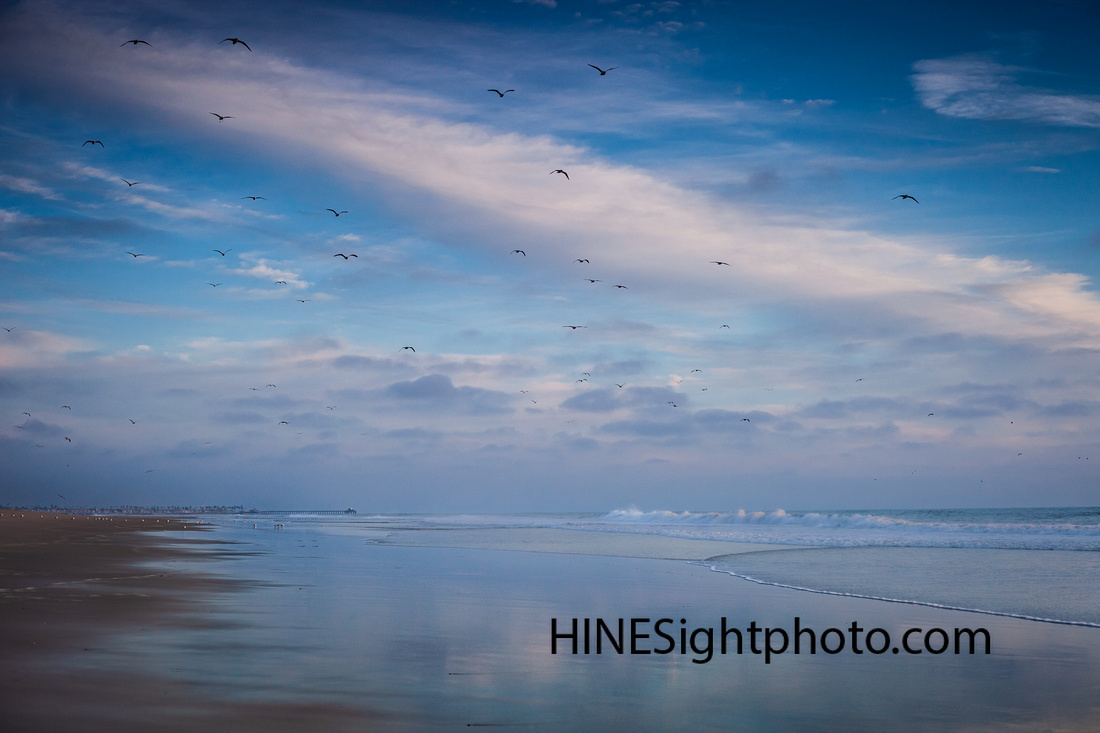
As I gaze upon this remarkable vista, I am struck by the grandeur of the Seal Beach coastline, stretching forth in all its majesty. The vast azure heavens, dappled with wisps of cloud, appear to embrace the earth with their celestial beauty. 'Tis a sight to behold, indeed.
The waves, whipped by the tempestuous January gales, have surrendered their hold upon the shore, leaving the sands glistening in the sun's warm rays. As one's eyes are drawn toward the horizon, the great Seal Beach Pier emerges as a miniature model, an unassuming testament to man's craftsmanship amidst nature's grand tapestry.
This picturesque landscape, however, is full of history. The land that now cradles the enchanting city of Seal Beach was once the territory of the indigenous Tongva people, whose presence is now a distant memory. In the 19th century, Anaheim Landing, a port that served as an essential link between ships and stagecoaches, flourished nearby. The passage of time bore witness to the region's transformation into a successful real estate development, which continued to prosper and flourish through the years.
Today, as I survey this charming expanse of wet sand, I observe the iridescent reflection of the heavens above, as if the sky has been brought down to earth. A magnificent colony of seagulls, the avian masters of the coast, have taken advantage of this windy day, soaring and dancing upon the wind with grace and elegance that would make envious the very angels. As I watch these intrepid creatures in their aerial ballet, I cannot help but be reminded of our capacity to rise above the storms that life may cast upon us.
In this tranquil scene, the Seal Beach coastline is a testament to the relentless march of time and the power of nature to shape and mold our surroundings. Yet, amidst the ever-changing tides of history.
]]>

A Short History of Lighting and Art:
Within the mesmerizing origins of artistic illumination, the ingenious masters of the Renaissance emerged, wielding light's dynamic energy to revolutionize the very essence of visual storytelling. The Renaissance, a period of profound cultural and artistic rebirth spanning the 14th to the 17th century, saw a dramatic shift in how painters approached their craft. Among the first to embrace the transformative potential of light were the masterful artists of the Italian Renaissance, who deftly wielded light as a tool to evoke emotion, depth, and realism in their work.
Giotto di Bondone was one of the earliest and most influential Renaissance painters to harness the power of light (c. 1267-1337). While Giotto's approach to lighting was still relatively simple compared to later Renaissance masters, his work marked a significant departure from the flat, stylized compositions of the Gothic period. By introducing directional light sources and more natural shading, Giotto laid the groundwork for the evolution of lighting techniques in Western art.
However, during the High Renaissance, the true potential of light in painting began to be fully realized. Artists like Leonardo da Vinci (1452-1519), Michelangelo Buonarroti (1475-1564), and Raphael Sanzio (1483-1520) elevated the use of light to an art form in itself, employing innovative techniques to create depth, atmosphere, and emotional resonance in their work.
Leonardo da Vinci, in particular, was a master of light and shadow. He pioneered the technique of sfumato, which involves the subtle blending of light and shadow to create a soft, smoky effect, imbuing his subjects with a lifelike, three-dimensional quality. His iconic painting, the Mona Lisa, exemplifies the skillful use of sfumato, as the play of light and shadow across her face creates an enigmatic, almost ethereal expression.
Meanwhile, Michelangelo's mastery of light can be seen in his frescoes adorning the ceiling of the Sistine Chapel. Through the skillful manipulation of light and shadow, Michelangelo imbued his figures with a sense of depth, volume, and movement, which had never been seen before in fresco painting. As a result, his work on the Sistine Chapel remains one of the best examples demonstrating the immense power of light to bring a composition to life.
Another key figure in developing lighting techniques during the Renaissance was the Baroque painter Caravaggio (1571-1610). Caravaggio was renowned for his dramatic use of light and shadow, known as chiaroscuro. He often employed a single, intense light source to create detailed contrasts between light and dark areas within his compositions, lending his subjects a sense of drama and emotional intensity. Caravaggio's innovative approach to lighting would inspire generations of painters, leaving an indelible mark on the history of art.
Early photographers explored the intertwined relationship between light and photography. The art and science of capturing
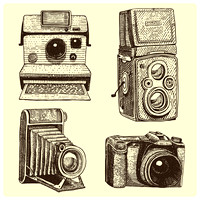 images have come a long way since its inception, but the magic of light remains at the heart of every photograph. We will delve into the early history of photography, from the humble beginnings of the camera obscura to the evolution of artificial light in photography.
images have come a long way since its inception, but the magic of light remains at the heart of every photograph. We will delve into the early history of photography, from the humble beginnings of the camera obscura to the evolution of artificial light in photography.
The camera obscura, Latin for "dark chamber," was the predecessor of the modern camera. It was a simple optical device that projected an inverted image of the external world onto a surface inside a darkened room or box. The basic principle relied on light traveling in straight lines, passing through a small hole or aperture, and forming an image on the opposite surface. This fascinating phenomenon, documented by philosophers and scientists such as Aristotle, Mozi, Alhazen, and Leonardo da Vinci, laid the foundation for the invention of photography.
The first permanent photograph was captured by Joseph Nicéphore Niépce in 1826 using a camera obscura and a chemically treated pewter plate. When exposed to light, the plate formed an image that marked the beginning of a new era in visual representation. Louis Daguerre further refined this process, developing the daguerreotype, which used silver-coated copper plates and required shorter exposure times. In these early stages, natural sunlight was the only light source for photography.
As photography advanced, the need for controlled and consistent lighting became apparent. This necessity led to the developing and incorporation of artificial light sources into the photographic process. The limelight was the first artificial light used in photography, created by heating a piece of limestone with an oxyhydrogen flame. Though yet to be portable, the limelight provided a stable and controllable light source for early photographers.
In the 1860s, the invention of magnesium flash powder offered a portable and instantaneous source of light. Photographers would ignite a small amount of magnesium powder, producing a bright flash that illuminated the scene briefly, which allowed for the capture of indoor scenes, nighttime shots, and faster exposure times. However, using magnesium flash powder was cumbersome and hazardous and was soon replaced by the flashbulb, which was safer and more practical.
The introduction of electric lighting further revolutionized photography, allowing photographers to experiment with various artificial light sources and techniques. Continuous light sources like incandescent and fluorescent bulbs could fine-tune lighting setups and create specific moods and effects. In addition, electronic flash, or strobe lighting, gave photographers even more control over light, enabling them to freeze motion and capture high-speed events.
The Modern Camera and Light:
A digital camera combines optics and electronics to capture and process images. The essential components of a digital camera
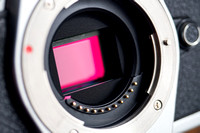 include the lens, which focuses incoming light, and the sensor, which is typically made of silicon and contains a grid of photosites or pixels.
include the lens, which focuses incoming light, and the sensor, which is typically made of silicon and contains a grid of photosites or pixels.
Each pixel on the sensor is sensitive to light and capable of converting the incoming photons into electrical signals. The number of pixels on a sensor determines the camera's resolution, with more pixels resulting in higher resolution and more detailed images. Digital cameras, especially DSLRs and mirrorless cameras, can have millions or even tens of millions of pixels on their sensors.
Once the light passes through the lens and reaches the sensor, the photosites generate electrical signals proportional to the intensity of light they receive. The camera's image processor then processes these electrical signals, which converts them into digital data. This digital data is represented as numerical values corresponding to each pixel's color and brightness levels.
The camera's processor also handles other tasks, such as applying white balance, noise reduction, and image compression, before the final image is saved as a file, usually in JPEG or RAW format. JPEG files are compressed and processed in-camera, while RAW files retain more image data and require post-processing in software to fine-tune the final output.
In summary, a digital camera focuses light through the lens onto a silicon-based sensor composed of millions of photosites or pixels. Each pixel detects light and generates electrical signals, which the camera's image processor processes to create a digital image file. This intricate process enables digital cameras to capture high-resolution, detailed photographs that can be easily shared and edited.
Natural Daylight Lighting Guidelines:
Situation: Direct Sunlight Subject Position: Place the subject with their back to the sun or at an angle to avoid squinting.
Tips & Techniques: Use a reflector to bounce sunlight back onto the subject, filling in shadows. A diffuser can also be used to soften harsh light. Landscape Guidelines: Shoot during the golden hour, when the sun is low in the sky, for warm colors and long shadows. Use a polarizing filter to enhance the sky and reduce glare.
Situation: Overcast Day Subject Position: Position the subject anywhere, as the clouds will diffuse the light evenly.
Tips & Techniques: Use a reflector to add directional light or remove shadows if necessary.
Landscape Guidelines: Overcast days are ideal for capturing vibrant natural colors, as the diffused light minimizes harsh shadows and contrast.
Situation: Open Shade Subject Position: Place the subject within the shaded area, facing the open sky or a brighter area.
Tips & Techniques: Use a reflector to bounce light into the subject's face and add catchlights to their eyes.
Landscape Guidelines: Look for areas of dappled light to create exciting patterns and textures within the landscape.
Situation: Golden Hour Subject Position: During the Golden hour position, the subject faces the warm sunlight directly or at an angle for the best possible light to cover the subject.
Tips & Techniques: Use a reflector or fill flash to balance the light on the subject's face and reduce shadows.
Landscape Guidelines: The golden hour provides warm, directional light that enhances colors, textures, and depth in landscape photos. Look for interesting shadows and backlit scenes to add visual interest.
Situation: Blue Hour Subject Position: Position the subject in a well-lit area, as the overall light levels will be low.
Tips & Techniques: Use a tripod and a slower shutter speed to capture more light, and consider using artificial light sources or fill flash to illuminate the subject.
Landscape Guidelines: The blue hour offers a fantastic, moody atmosphere, perfect for capturing cityscapes and landscapes with artificial lights. Use a tripod and longer exposures to capture the available light and create a sense of motion.
Adjust these guidelines based on your specific shooting conditions and desired outcome. Experimenting with lighting scenarios and tools will help you develop your photography skills and create unique, compelling images.
Artificial Lighting Techniques:
Key Light: The key light is the primary light source in a scene. It is typically positioned at a 45-degree angle in front of the subject,
 slightly above their eye level. The key light defines the subject's shape and form and sets the overall tone of the scene.
slightly above their eye level. The key light defines the subject's shape and form and sets the overall tone of the scene.
Backlight: The backlight is placed behind the subject, often at a higher angle. It separates the subject from the background by creating a subtle rim of light around the subject's edges. This adds depth and dimension to the scene and helps the subject stand out against the background.
Fill Light: The fill light is positioned opposite the key light, at the same level or slightly lower. Its purpose is to fill in the shadows created by the key light, reducing contrast and providing a more even, balanced illumination.
Side Light: A side light is placed at a 90-degree angle to the subject, illuminating one side of their face or body while leaving the other side in shadow. This lighting position can create a dramatic, moody effect or emphasize the texture and shape of the subject.
Front Light: Front light is positioned directly in front of the subject, evenly illuminating their face or body without casting significant shadows. This lighting position is often used for a flat, uniform look, which is commonly seen in product photography and some portrait styles.
Examples of Artificial Light Setups:
Single-Light Setup: In a single-light setup, the key light is used as the only light source, creating a high-contrast scene with solid shadows. This setup is ideal for dramatic or moody portraits and can be softened by adding a reflector to bounce light back onto the subject.
Two-Light Setup: In a two-light setup, the key light is combined with either a fill light or a backlight. The fill light helps to soften shadows and create a more balanced look, while the backlight adds depth and separation between the subject and the background. This setup is versatile and can be used for various purposes, including portraits, product photography, and interviews.
Three-Light Setup: In a three-light setup, the key light, fill light, and the backlight are used to create a balanced and visually appealing scene. This setup provides complete control over the lighting environment and is ideal for creating professional-quality images in various genres, such as portraiture, fashion, and commercial photography.
By understanding the different positions and effects of artificial lights, you can create a wide range of lighting setups to achieve the desired look and mood for your photography or filmmaking projects. In addition, experimenting with different light sources, positions, and intensities will help you develop your skills and create compelling visuals.
Using a flash for lighting can significantly enhance your photography by providing additional light, freezing motion, or filling in shadows when needed. Here's a guide to help you understand the fundamentals of using a flash and various techniques to improve your images:
Direct Flash: Direct flash is the most basic technique, where the flash is pointed directly at the subject, which can create a harsh and flat look with strong shadows behind the subject. You can use a diffuser or bounce the flash off a nearby surface to soften the light.
Bounce Flash: Bouncing the flash involves angling the flash head to reflect the light off a surface, such as a wall or ceiling, before it reaches the subject, which creates a softer, more diffused light that mimics natural light and reduces harsh shadows. The surface you bounce the flash off will affect the color and quality of the light, so choose a neutral-colored surface for the best results.
Fill Flash: Fill flash is used to fill in shadows on a subject when a vital light source, such as the sun, creates harsh shadows on their face. You can brighten the shadow areas using a lower flash power without overpowering the existing light.
Off-Camera Flash: Using an off-camera flash allows you to position the flash independently from the camera, providing more control over the direction and quality of the light. You can trigger off-camera flashes using a cable, wireless triggers, or your camera's built-in flash (if it supports wireless flash control).
Multiple Flash Setup: Two or more flashes are used together to create a more complex and controlled lighting environment in a multiple flash setup. You can use a combination of direct, bounced, and off-camera flashes to achieve the desired look. Flashes can be synced together using wireless triggers or one flash as a "master" that triggers the other "slave" flashes.
High-Speed Sync (HSS): High-Speed Sync allows you to use flash at shutter speeds faster than your camera's average flash sync speed, which is helpful in freezing motion or balancing flash with bright ambient light. To use HSS, your camera and flash must support this feature.
Rear-Curtain Sync: Rear-curtain sync is a technique that fires the flash at the end of the exposure rather than at the beginning, creating exciting motion blur effects, where the subject appears sharp but has a trail of motion behind them.
Tips for Flash Photography:
- Always be aware of your flash's power and recycling time. Using a flash at full power will take longer to recycle, meaning you may miss shots if you're shooting in rapid succession.
- When using bounce flash, the larger the surface you bounce off, the softer the light will be.
- To control and shape the light, experiment with different flash modifiers, such as diffusers, softboxes, and snoots.
- Remember that the distance between the flash and the subject affects the quality of the light. Moving the flash closer will create a softer light, while moving it farther away will create harsher shadows.
By understanding and mastering these flash photography techniques, you can create various lighting effects and improve the quality of your images in challenging lighting conditions.
Conclusion:
The journey of photography and lighting is a profoundly enriching and transformative experience that has evolved over the centuries. From the early beginnings of capturing light through camera obscura to modern-day techniques with advanced digital cameras and lighting equipment, photography has consistently been an art form intimately tied to the beauty of light and shadow. I am continually amazed by the ingenuity and creativity of photographers throughout history and their ability to master the language of light.
As a new photographer embarking on this incredible journey, embracing the rich history of photography and the techniques passed down through generations is essential. The art of photography encompasses capturing moments, preserving memories, and communicating emotions and stories through the interplay of light and shadow. To excel in this craft, you must learn to observe and understand the nuances of lighting, experiment with different techniques, and discover a unique style that resonates with your vision.
As you continue to hone your skills, draw inspiration from the great photographers and artists of the past while always looking forward to the possibilities the future holds. With every new image you create, you become a part of the ongoing story of photography, contributing to a legacy that spans centuries and transcends cultural and geographical boundaries.
I encourage you to embrace this journey with an open heart and insatiable curiosity. Explore the world around you with a keen eye for light, shadow, and composition, and never cease learning and growing as an artist. Remember that photography is about capturing an image, the essence of a moment, and the emotions it evokes.
In the words of the renowned photographer Ansel Adams, "You don't take a photograph. You make it." So go forth, my fellow photographers, and make your mark on the world through the captivating language of light and shadow. May your journey be filled with discovery, growth, and endless inspiration as you capture life's beauty and complexity through your camera's lens.
A Short Story About a Young Photographer:
As the sun dipped below the horizon, painting the sky in a swirl of oranges and purples, Samantha gazed at the breathtaking view through the lens of her camera. She snapped a picture, capturing the precise moment when the sun kissed the horizon goodbye. The young photographer had always been captivated by the interplay of light and shadow in her images, but her fascination had intensified in recent months.
An old book she had discovered in a dusty corner of a used bookstore had piqued her interest. Its pages were filled with the rich history of photography and the pioneers who had brought the art to life. Samantha was enchanted by the stories of those who had come before her, manipulating light and shadow to immortalize fleeting moments.
She spent hours poring over the book, her fingers tracing the delicate black-and-white images of long-forgotten photographers. Samantha became obsessed with understanding the principles that guided these masters of their craft. She longed to replicate their techniques and produce images that would stand the test of time, just as theirs had.
With her camera and the knowledge she gleaned from the book, Samantha embarked on a journey to rediscover the lost art of light and shadow:
- She traveled to historic sites, capturing sunlight's intricate patterns on ancient stone.
- She ventured into the depths of dense forests, where dappled light danced through the trees, casting eerie shadows on the forest floor.
- Her quest took her to the edges of the world, where the interplay of light and shadow was at its most dramatic.
In the far reaches of the Arctic, Samantha stood on the edge of a frozen lake, her breath frosting in the frigid air. The sun hung low in the sky, casting long, spindly shadows across the ice. The world seemed suspended in a perpetual twilight, with the boundaries between light and darkness blurred beyond recognition. The scene's beauty was almost too much for Samantha's heart to bear, and she trembled with excitement as she raised her camera to capture the sight.
As she clicked the shutter, Samantha experienced a profound connection with the photographers who had come before her. In that instant, she felt the weight of history pressing down her shoulders, and a shiver ran down her spine. The young photographer understood that she was part of a legacy stretching back through the centuries and embraced her role in preserving the magic of light and shadow.
Samantha's journey had taken her to the farthest reaches of the world, but in the end, it was not the breathtaking landscapes or the ancient architecture that had captivated her. Instead, it was the knowledge that she was part of a long line of artists who had devoted their lives to capturing the beauty of light and shadow. Samantha felt a sense of duty to carry on these pioneers' legacy and share their wisdom with future generations.
As she explored the world, camera in hand, Samantha dedicated herself to understanding the elusive art of light and shadow. She sought to master the techniques of the past and to innovate new methods for capturing the beauty of the world around her. In doing so, she honored the photographers who had come before her, ensuring their legacy would live on in the images she created and the knowledge she passed on to those who would follow in her footsteps.
]]>
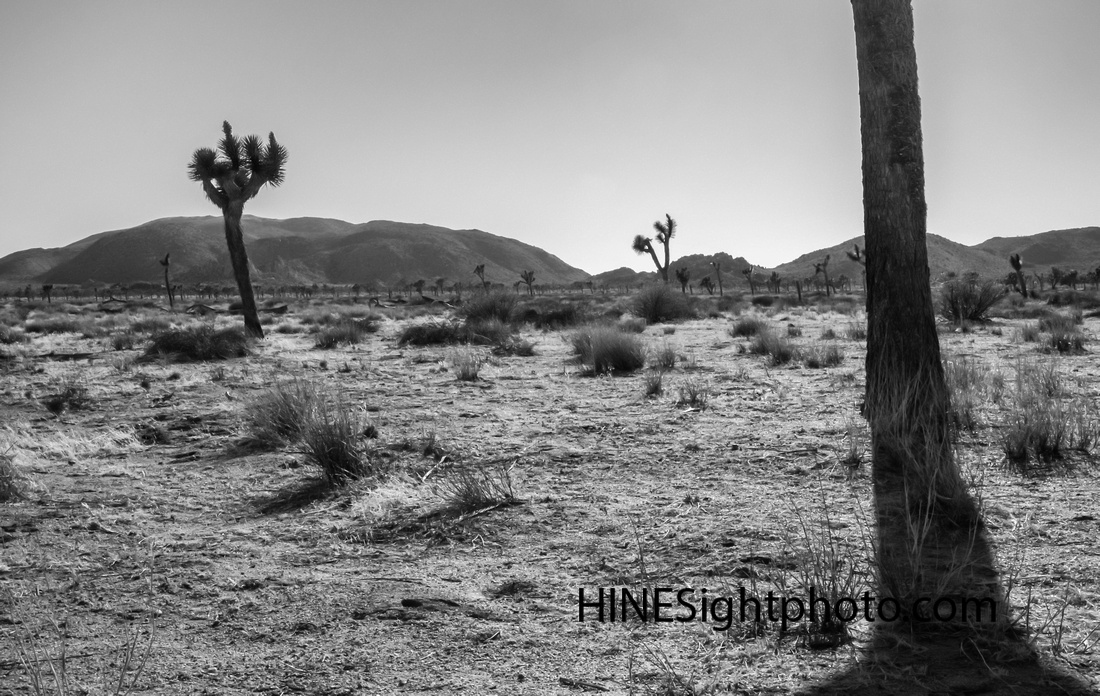
In the language of the land, there is an exquisite conversation unfolding in the black and white photograph titled "Shadow Frame Right." The ancient stories told by the desert are whispered in the textured patterns of the earth and the proud silhouette of the Joshua tree – a sentinel that has witnessed the passage of time.
As the first blush of spring unfurls its tender embrace across the arid expanse, the sky above Joshua Tree arches in crystalline clarity, a canvas painted with the subtlest shades of gray. This landscape speaks in the poetry of contrast: the stark simplicity of the elements juxtaposed against the intricate layers of life that persist in this seemingly inhospitable realm.
The photograph captures a moment suspended in time, where the proud trunk of a Joshua tree casts a dark silhouette against the backdrop of a flawless sky. This shadowy figure offers a fleeting sanctuary from the relentless sun, a refuge that invites respite and contemplation. Like the afternoon sun in the desert, this contrast's visual intensity is overwhelming and mesmerizing.
Our gaze wanders, tracing the earth's contours beneath our feet, where the textured dirt and sparse brush speak of a land that has endured nature's extremes. Finally, we are drawn to the midground, where another Joshua tree stands in quiet communion with its shadowy counterpart, framed just to the left. Their graceful limbs reach skyward, a testament to their resilience and wisdom gleaned from their desert home.
As our eyes wander further, we are beckoned toward the distant mountains that anchor the horizon, their hazy outlines softened by the play of light and shadow. The vast expanse of the gray sky above holds the promise of the unknown, a canvas upon which we may paint our dreams and aspirations.
"Shadow Frame Right" is a formal invitation to immerse oneself in the enigmatic beauty of Joshua Tree. As we stand at the threshold of this mesmerizing landscape, we become attuned to the subtleties and secrets it has to share. The dance of light and shadows, the whispers of the wind, and the enduring strength of the Joshua trees offer us a portal into the wild heart of the desert, where we may find our place within the tapestry of life.
The Secret Power of "Shadow Frame Right" – A Masterpiece That Can Transform Your Life!
Dear Friend,
Imagine the serenity of standing amid an endless expanse of desert, the sun kissing your face, and the wind whispering ancient secrets. Now, picture a work of art that captures the essence of this experience – one that you can own and cherish forever.
It introduces "Shadow Frame Right" – a stunning fine art black and white photograph that will transport you to the heart of Joshua Tree and reveal a world of beauty, mystery, and untold inspiration.
This masterpiece is more than just a photograph; it's a portal to another world that can elevate your mood, ignite your imagination, and infuse your life with the transformative power of nature. And for a limited time, you can bring this unique experience into your home at a truly unbeatable price.
Here's what makes "Shadow Frame Right" so extraordinary:
- Awe-Inspiring Visuals: The stark contrast between the proud silhouette of the Joshua tree and the vast, clear sky creates a dramatic effect that will captivate you from the very first glance. It's a visual journey from the textured desert floor to the distant, majestic mountains and beyond.
- Emotional Connection: This photograph speaks to your soul, evoking a sense of wonder, resilience, and hope. It's a reminder that, just like the Joshua tree, you too can thrive amidst adversity and reach for the skies.
- Timeless Elegance: The beauty of black and white photography lies in its simplicity and the way it transcends time. "Shadow Frame Right" is a piece that will never go out of style, and its allure will only grow stronger as the years go by.
]]>
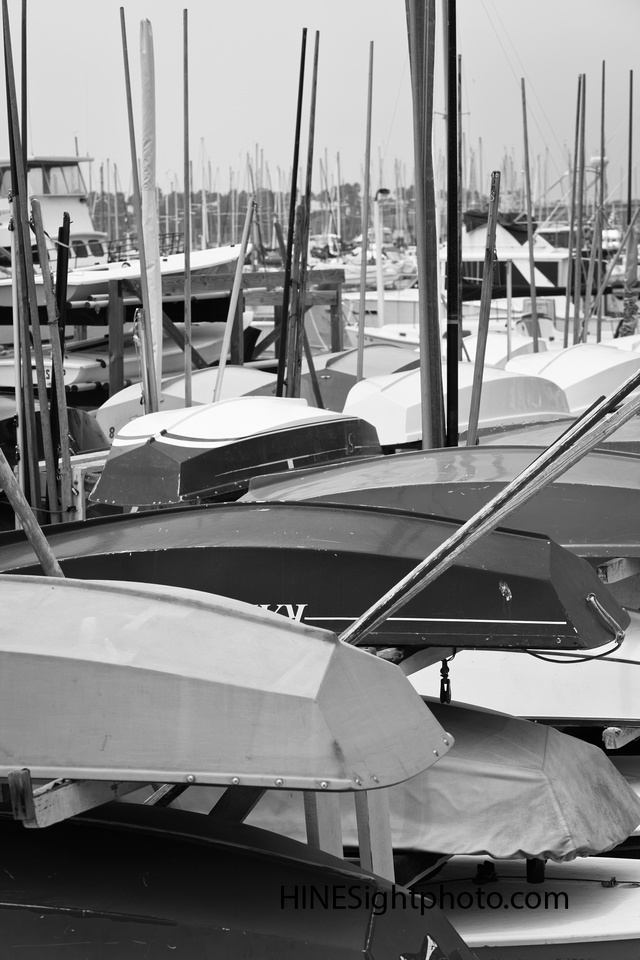
I found myself utterly captivated by a scene that seemed as if plucked from a fine art black and white photograph, which I would later come to call "Shades of Dinghies." As my eyes surveyed the landscape, it was as if the water had vanished, leaving an endless sightline of boats in the harbor. Hundreds of masts commanded the skyline, creating an overwhelming yet strangely beautiful architectural dance. The interplay of light and shadow in the foreground drew my attention to the countless Windmill Dinghies, stored upside down and carefully stacked in rows of two. It was as if I could feel the pulse of the winter season, a quiet interlude, offering these tireless vessels a brief respite from the long hours they would soon devote to summer sailing school. At that moment, I was reminded of the delicate balance between stillness and motion and how the world can sometimes present itself in the most unexpected yet enchanting ways.
]]>
You are already a photographer:
As a proud member of the 91.40% of people worldwide who own cell phones, you already possess a powerful tool for capturing memories and moments through photography. Whether you realize it or not, your smartphone's camera is an incredible resource for honing your photography skills.
Cell To Smart, A Short History:
The cell camera is vital in tech. It links talking and taking pictures. The history of this tool is an exciting story of intelligent people and progress. The start of the cell camera goes back to Philippe Kahn in 1997. He wanted to share his daughter's birth with a digital picture. So he tied a digital camera to a flip phone, letting him send the first photo from a phone. This significant step started a new time in taking pictures. Early phones like the 1999 Kyocera VP-210 and the 2002 Nokia 7650 had cameras single handily changed how we shared pictures. The cell camera got better over time. Now we can take great pictures with a small device. We should remember people like Kahn when we think of new tech. In short, the cell camera's story shows how intelligent people can work together to make significant changes in talking and tech.
Smartphone Photo Guide for Beginners:

- Know Your Phone
Learn about your phone's camera features. First, find out how to access settings like flash, timer, and grid lines. Then, explore your phone's camera modes, such as portrait or panorama.
2. Light is Key
Good lighting is crucial for clear photos. Use natural light when possible. Avoid direct sunlight, as it creates harsh shadows. Instead, aim for soft, even light, like during the golden hour (shortly after sunrise or before sunset.)
3. Composition Matters
Arrange your photo to make it appealing. Use the rule of thirds: imagine a grid dividing your photo into nine equal parts. Place your subject where the lines intersect. Using the grid will add balance and interest to your pictures.
4. Understanding F-Stop
F-stop (or aperture) affects the amount of light entering your camera. A lower f-stop number means a wider aperture and more light, creating a shallow field depth with a sharp subject and blurred background. On most smartphones, the f-stop will be on a fixed setting, but some models allow manual adjustment.
6. Keep Steady
Avoid blurry photos by keeping your phone steady. Hold it with both hands and gently press the shutter button. Use a tripod or lean against a stable surface for extra support.
7. Zoom with Caution
Digital zoom can lower photo quality. Instead, get closer to your subject or crop the image afterward. Some smartphones offer optical zoom, which preserves image quality.
8. Edit Your Photos
Enhance your photos with editing apps. Adjust brightness, contrast, and saturation. Apply filters or crop for better composition. Remember, less is more in editing photography. Keep edits subtle for a natural look.
9. Backup and Organize
Store your photos safely by backing them up using external storage like a cloud system or an external drive. Keep your gallery organized by creating albums and deleting unwanted images.
10. Learn and Improve
Practice regularly and experiment with different techniques. Learn from your mistakes and be open to feedback. Join online communities to share your work and gain inspiration.
11. Have Fun
Enjoy the process of capturing memories and telling stories through your photos. Be creative, and don't be afraid to break the rules.
In conclusion, smartphone photography is a fun and accessible way for beginners to develop their skills. By understanding basic principles like light, composition, and f-stop, you'll be on your way to capturing stunning images with your smartphone. Remember to practice, edit your photos, and, most importantly, have Fun.
A Guide to Editing Smartphone Pictures: Embracing Creative Control

To Edit or Not to Edit?
We ask in the digital photography age: should we edit our photos? Before digital, film processing determined the final look of our photos. But now, we have the power to fine-tune our images. So embrace your creative control and enhance your photos with purposeful editing.
The Need for Editing:
In the past, film processing determined a photo's final appearance. Back then, technicians in the dark room developed the film according to standard procedures, which left little room for adjustments. Today, digital photography allows us to take control of the editing process. As a result, we can correct imperfections and enhance our photos to meet our artistic vision.
Creative Control: It's Up to You
As the photographer, you can decide how your photos should look. Your goals for your images will shape your editing decisions. Ask yourself: what story do I want to tell? What emotions do I want to evoke? Then, use editing as a tool to achieve your desired outcome.
Essential Editing Considerations:
- Preserve Photo Quality: Aim to maintain the original image's quality when editing. Avoid over-editing, which can lead to a loss of detail or an unnatural appearance.
- Adjust Exposure: Ensure your photo is correctly exposed. Use editing tools to brighten underexposed images or tone down overexposed areas.
- Fine-tune Colors: Adjust the color balance for accurate and pleasing colors. Enhance saturation to make colors pop, or reduce it for a more subdued look.
- Contrast and Clarity: Boost contrast to make your subject stand out. Increase clarity to add definition and enhance textures.
- Crop and Straighten: The cropping tool improves the composition and removes unwanted elements. Straighten tilted horizons for a more polished look.
- Sharpening: Apply subtle sharpening to enhance details without introducing noise or artifacts.
- Noise Reduction: Reduce noise in high ISO or low-light images for a cleaner result.
- Retouching: Remove blemishes, spots, or other distractions for a more polished appearance.
- Apply Filters and Presets: Use filters and presets to achieve a consistent look across your images or to experiment with different styles.
- Know When to Stop: Don't overdo your editing. Aim for a balance between enhancing your image and maintaining its natural qualities.
Editing Apps for Smartphone Photography:
Numerous editing apps can help you enhance your smartphone photos. Some popular options include:
- Snapseed: A versatile editing app with a wide range of tools and filters for beginners and advanced users.
- Adobe Lightroom Mobile: A powerful app for organizing and editing photos with professional-grade tools and syncing capabilities.
- VSCO: Known for its beautiful filters, VSCO also offers essential editing tools for fine-tuning your images.
- Afterlight: A user-friendly app with various editing tools and filters to help you achieve your desired look.
- Prisma: Transform your photos into artistic masterpieces with Prisma's unique filters inspired by famous artists and styles.
Editing Workflow:
Develop a consistent editing workflow to achieve a cohesive look across your images. Start by making basic adjustments like exposure and color balance. Next, fine-tune your image with contrast, clarity, and sharpening. Finally, apply filters, presets, or retouching as needed. This structured approach will help you stay organized and efficient in your editing process.
In conclusion, editing is an essential part of digital photography that allows you to control your images creatively. By understanding the importance of editing and considering essential considerations, you can enhance your photos and achieve your artistic goals. Remember to use editing to tell your story and evoke emotions while preserving your most cherished images of life.
Conclusion:
As a photographer and teacher, I am continually amazed by the power of photography to capture the beauty and essence of the world around us. From the minor details to the grandest vistas, there is something magical about freezing a moment in time and preserving it for all to see.
And now, in the digital age, we have a new level of freedom and creativity. No longer bound by the constraints of film processing or the limitations of a darkroom, we can explore new depths of color, contrast, and composition. We can experiment with different editing techniques and filters to create unique and stunning images.
But with this newfound freedom comes responsibility: the responsibility to document and preserve the images of our lives and world. As we all know, the digital age has brought a rapid pace of change and advancement, and it can be challenging to lose track of our digital files amidst the constant stream of new technology and devices.
That's why it's more important than ever to take the time to organize and back up our digital images to ensure that each image will be preserved for future generations to enjoy. Whether through cloud storage, external hard drives, or physical prints, there are many ways to keep our images safe and secure.
And let's remember the power of photography to bring joy and wonder into our daily lives. Whether you're a professional photographer or enjoy taking snapshots on your smartphone, there is something truly magical about capturing a moment of beauty or meaning.
So keep on shooting, my friends. Remember that photography is about creating beautiful images and documenting the moments of our lives and the world around us. Embrace your creative control as a photographer, and never be afraid to experiment and try new things.
In this extraordinary time of the digital age, the possibilities for photography are truly limitless. So let's continue to explore and push the boundaries of what's possible, and always remember to appreciate the beauty and wonder of the world around us.
Thank You,
Randy
]]>
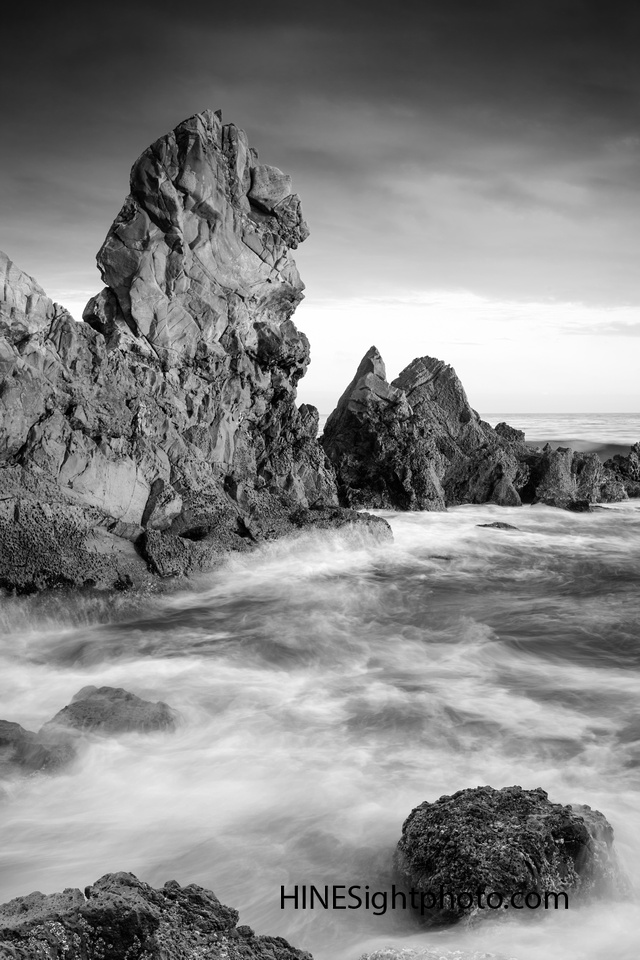
In "Crestfallen," Randy captures the essence of a March afternoon at Little Corona Beach in Del Mar, California, where the salt air hangs heavy, and the relentless waves embrace the ageless rocks. Through the lens of a slowed shutter, the surf appears to dance like a specter over the stones, blurring the line between solid and fluid, reality and dream. Randy's artistry weaves a tapestry of juxtaposition – the gentle, ephemeral caress of the waves against the stoic, immovable presence of the massive rock in the background. This proud sentinel, standing frame left, defies the steady erosion wrought by Mother Nature herself, bearing witness to the eternal struggle between land and sea.
The dark, ominous clouds overhead cast a sense of vulnerability and awe, evoking within the viewer a profound respect for the forces at play in this coastal tableau. The stark beauty of the image, rendered in black and white, heightens the contrasts and creates a sense of timeless drama. As the sea ebbs and flows, the photograph reminds us of the delicate balance between creation and destruction, the fleeting and the everlasting.
]]>
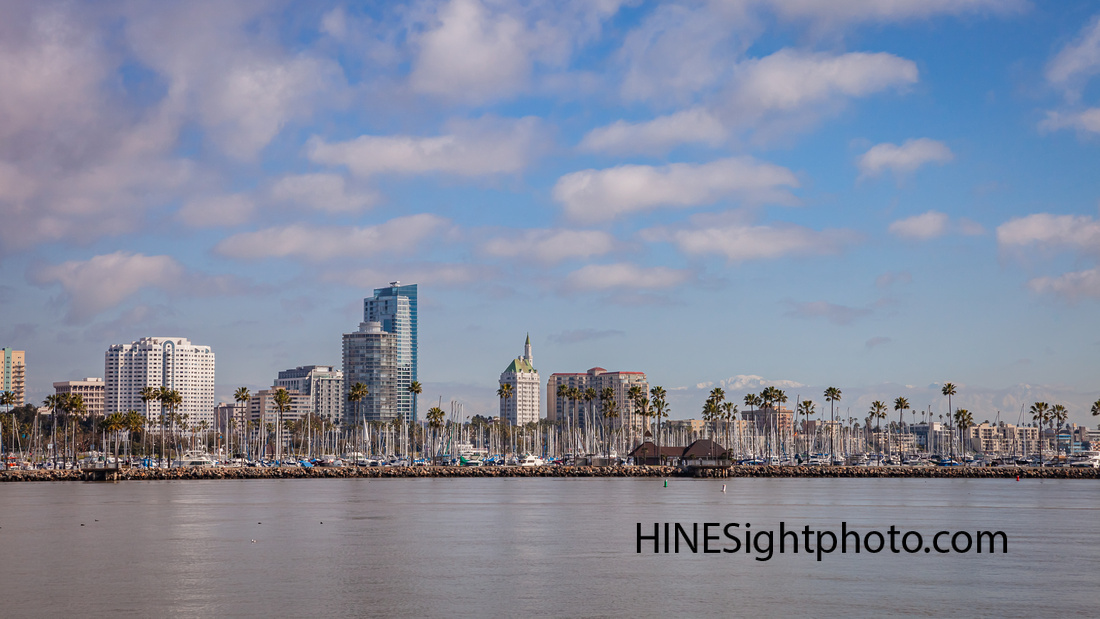
"Peak to Beach"
"Behold, the stunning majesty of Long Beach! This city truly has everything from the snow-capped peaks of the San Gabriel Mountains to the sparkling waves of the Pacific Ocean. And at its heart, the Villa Riviera building is a testament to the city's rich history and enduring beauty. Just look at how it towers above the landscape, its Gothic spires piercing the sky. This city has seen it all - from earthquakes to oil booms - and yet it endures, a beacon of hope and progress for all who call it home."
]]>
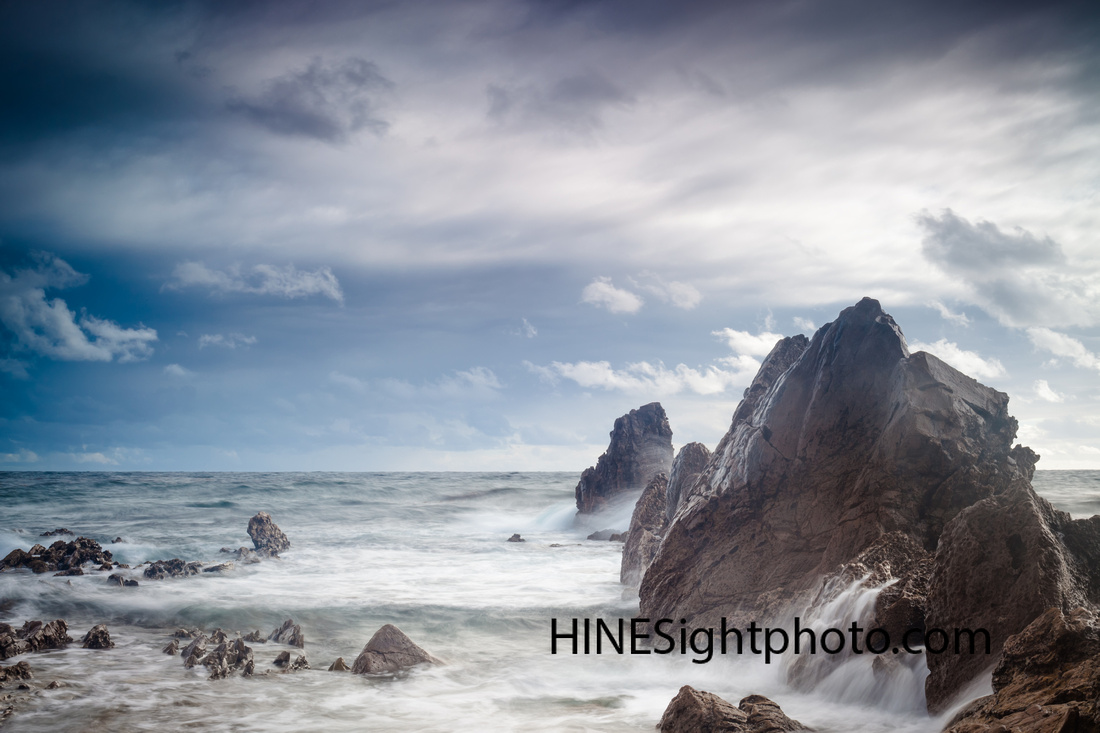
A HISTORY OF COMPOSITION:
As a beginner in photography, it's essential to understand that creating the perfect shot goes beyond just pressing a button. Composition is a fundamental principle of art and photography that plays a crucial role in telling the image's story. By carefully arranging visual elements such as line, shape, color, texture, and space, an artist can create a sense of balance, harmony, and visual interest within the artwork.
The history of composition dates back to at least the late 18th century, with the rule of thirds being a widely recognized principle. However, the concept has been explored by artists for centuries, with the golden ratio being one of the most fundamental principles of art and mathematics. It's important to understand these principles and remember they are just guidelines. With practice and experimentation, you can find your unique style and approach to composition in photography.
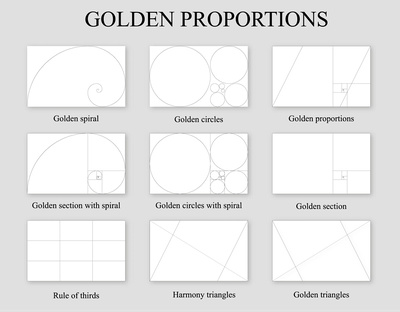
Applying the Golden Ratio and the Rule of Thirds in photography allows you to create visually compelling and emotionally resonant images. Whether you are capturing a landscape, portrait, or product, it's essential to consider the placement of the critical elements of the composition along the lines or at their intersections. For example, remember to position the horizon line along the upper third of the frame if the focus is on the land and the lower third if the focus is on the sky. For portrait photography, position the subject's eyes at one of the intersections of the grid created by the Rule of Thirds, and align their body along one of the vertical lines.
Remember that composition is a fundamental principle of photography that takes practice and patience to master. So keep experimenting and learning, be bold, break the rules, and find your unique style. With hard work, dedication, and a willingness to learn, you can achieve your photography goals and create powerful, engaging images that tell a story.
A BEGINNER'S GUIDE TO COMPOSITION:
Abstract Photography:
- Abstract photography focuses on creating unique and imaginative images through color, texture, and shape.
- The goal is to create a sense of mystery and intrigue in the viewer, allowing them to interpret the image in their way.
- Experimentation and creativity are essential in abstract photography, with techniques like blurring, cropping, and close-ups used to create unique and exciting images.
- Pay attention to the details and try to find beauty in the ordinary. Look for patterns, textures, and shapes that can be highlighted and transformed into abstract compositions.
- Use light and shadow to create depth and contrast, and consider using filters or editing software to enhance the final image.
- Don't be afraid to take risks and try new things. Abstract photography is about breaking the rules and creating something unique and beautiful.
Aerial Photography:
- Look for interesting patterns and shapes from a bird's-eye view.
- Consider using symmetry and repetition to create striking compositions.
- Use a polarizing filter to reduce glare and improve color saturation.
- Experiment with different angles and compositions to capture unique perspectives.
- Pay attention to the quality of light and shoot during the golden hour (early morning or late afternoon) for warm, soft light.
Architecture Photography:
- Look for interesting lines, shapes, and patterns in the building's design.
- Consider using a wide-angle lens to capture the entire building or a telephoto lens to highlight specific details.
- Pay attention to the quality of light and consider shooting during the golden hour or blue hour (just before sunrise or after sunset) for dramatic lighting.
- Look for exciting reflections or shadows to add visual interest to the shot.
- Experiment with different angles and compositions to find the most exciting perspective.
Astrophotography:
- Use a sturdy tripod to keep the camera stable during long exposures.
- Use a wide-angle lens with a large aperture to capture as much light as possible.
- Look for exciting foreground elements to add depth and interest to the shot.
- Use a remote release or self-timer to avoid camera shaking during long exposures.
- Pay attention to the phase of the moon and consider shooting during a new moon for the darkest skies.
Black and White Photography:
- Pay attention to the contrast and tonal range of the subject being photographed.
- Look for interesting textures and patterns that stand out in black and white.
- Use a medium aperture to create a significant depth of field and keep the entire subject in focus.
- Pay attention to the lighting and use reflectors or diffusers to control the shadows.
- Experiment with different angles and compositions to find the most exciting perspective.
Commercial Photography:
- Consider the message you want to convey with the image and how it will be used.
- Pay attention to the advertised product or service and how it can be presented most compellingly.
- Look for interesting angles, lighting, and compositions to create visually striking images.
- Consider using models or actors to add life and energy to the shot.
- Please pay attention to the background and ensure it complements the advertised product or service.
Dance Photography:
- Use a fast shutter speed to freeze motion and capture the movement.
- Use a telephoto lens to capture the dancer in close-up shots.
- Look for interesting angles and compositions to create visually compelling images.
- Use natural light or off-camera flash to create a dynamic atmosphere.
- Please pay attention to the background and ensure it complements the photographed dance.
Event Photography:
- Be prepared for unexpected moments and capture candid shots.
- Pay attention to the context and background to add depth and meaning to the shot.
- Use a fast shutter speed to freeze motion and capture the action.
- Look for interesting angles and compositions to create visually compelling images.
- Consider using flash to improve the lighting in low-light situations.
Fashion Photography:
- Pay attention to the modeled clothing and accessories and how they can be presented most compellingly.
- Look for exciting poses and angles to create visually striking images.
- Use a variety of lenses to capture full-length, half-length, and close-up shots.
- Pay attention to the lighting and use reflectors or diffusers to control the shadows.
- Consider using a model with an attractive face or unique features to add character to the shot.
Food Photography:
- Pay attention to the presentation of the food and how it can be presented in the most appetizing way.
- Use natural light or diffused light to create soft, even lighting.
- Look for interesting angles and compositions to create visually appealing images.
- Please pay attention to the background and ensure it complements the photographed food.
- Consider using props or accessories to add interest and context to the shot.
Headshot Photography:
- Use a telephoto lens to capture the head and shoulders of the subject.
- Use a medium aperture to create a considerable depth of field and keep the entire face in focus.
- Consider the background and try to choose a simple, uncluttered setting.
- Look for interesting angles and compositions to create visually compelling images.
- Pay attention to the lighting and use reflectors or diffusers to control the shadows.
Landscape Photography:
- Consider the Rule of Thirds when positioning the horizon line.
- Look for exciting foreground elements to add depth to the shot.
- Use a small aperture to create a considerable depth of field and keep the entire scene in focus.
- Pay attention to the quality of light and consider shooting during the golden hour (early morning or late afternoon).
- Experiment with different angles and compositions to find the most interesting perspective.
Macro Photography:
- Use a macro lens to capture small details up close.
- Use a small aperture to create a significant depth of field and keep the entire subject in focus.
- Use natural light or off-camera flash to create soft and even lighting.
- Look for interesting angles and compositions to create visually compelling images.
- Use a tripod or other stabilizing device to avoid camera shake.
Newborn Photography:
- Use a macro lens to capture the small details of the newborn.
- Use soft, diffused lighting to create a warm and inviting atmosphere.
- Look for interesting angles and compositions to create visually compelling images.
- Use props such as blankets, baskets, or hats to add visual interest to the shot.
- Pay attention to the newborn's safety and comfort throughout the shoot.
Pet Photography:
- Use a fast shutter speed to freeze motion and capture the action.
- Use a telephoto lens to capture the pet in close-up shots.
- Get down to the pet's level for more engaging and intimate shots.
- Look for interesting angles and compositions to create visually compelling images.
- Use treats or toys to get the pet's attention and create a more animated expression.
Photojournalistic Photography:
- Capture candid moments and emotions to tell a story.
- Look for exciting moments and events that capture the mood of the story.
- Pay attention to the context and background to add depth and meaning to the shot.
- Consider using a wide-angle lens to capture the entire scene or a telephoto lens to capture specific details.
- Be prepared for unexpected moments and capture candid shots.
Portrait Photography:
- Position the subject's face along one of the vertical lines of the Rule of Thirds.
- Place the eyes at one of the intersections of the grid created by the Rule of Thirds.
- Use a wide aperture to create a shallow depth of field and blur the background.
- Consider the background and try to choose a simple, uncluttered setting.
- Play with different angles and poses to add visual interest to the shot.
Product Photography:
- Use a light tent or softbox to create soft and even lighting.
- Use a medium aperture to create a considerable depth of field and keep the entire product in focus.
- Look for interesting angles and compositions to create visually compelling images.
- Please pay attention to the background and ensure it complements the photographed product.
- Consider using props or accessories to add interest and context to the shot.
Real Estate Photography:
- Use a wide-angle lens to capture the entire room and create a sense of space.
- Use natural light or off-camera flash to create a bright and inviting atmosphere.
- Look for interesting angles and compositions to create visually compelling images.
- Ensure the background complements the photographed property.
- Consider staging the room with props and accessories to add visual interest to the shot.
Sports Photography:
- Use a fast shutter speed to capture the action.
- Anticipate the moment and be ready to capture it.
- Consider burst mode to capture a series of shots in rapid succession.
- Use a telephoto lens to get closer to the action.
- Include surroundings to give context to the shot.
Still Life Photography:
- Use a light tent or softbox to create soft and even lighting.
- Use a small aperture to keep the entire subject in focus.
- Look for interesting angles and compositions to create visually compelling images.
- Ensure the background complements the photographed subject.
- Use props or accessories to add interest and context to the shot.
Street Photography:
- Use a wide-angle lens to capture the scene and environment.
- Use natural light or off-camera flash to create a dynamic atmosphere.
- Look for interesting angles and compositions to create visually compelling images.
- Capture candid moments and emotions to tell a story.
- Ensure the background complements the photographed scene.
Travel Photography:
- Use a variety of lenses to capture the different sights and scenes of the location.
- Use natural light or off-camera flash to create a warm and inviting atmosphere.
- Look for interesting angles and compositions to create visually compelling images.
- Ensure the background complements the photographed location.
- Be prepared for unexpected moments and capture candid shots.
Wedding Photography:
- Use a variety of lenses to capture full-length, half-length, and close-up shots.
- Use natural light or off-camera flash to create a warm and inviting atmosphere.
- Look for interesting angles and compositions to create visually compelling images.
- Ensure the background complements the wedding setting.
- Be prepared for unexpected moments and capture candid shots.
Wild Animal Photography:
- Use a telephoto lens to capture the animal from a safe distance.
- Use a fast shutter speed to freeze motion and capture the action.
- Look for interesting angles and compositions to create visually compelling images.
- Ensure the background complements the photographed animal.
- Be patient and wait for the right moment to capture the shot.
CONCLUSION:
As you embark on your journey of capturing the world through your lens, remember that a clear goal is essential for any great accomplishment. Without a vision, it's easy to get lost in the details and lose sight of what you're trying to achieve. So, take the time to define your goals as a photographer and use them as a guiding light to stay focused and motivated.
Challenges and setbacks are inevitable, but how you respond to them will determine your success. In photography, the composition is a fundamental element to master. It's how you arrange the elements in your frame to create a captivating image that tells a visual story.
Be encouraged if you get it right first. Every mistake is an opportunity to learn and grow. As you practice and experiment with different compositions, you'll see patterns emerge, and your skills will improve.
Keep your passion and curiosity alive as you progress on your photography journey. Look for new and exciting ways to capture the world around you. Remember that composition is just one tool in your arsenal, so feel free to break the rules and find your style.
Ultimately, as in life, the key to success in photography is perseverance and a willingness to learn. So as you continue to shoot and explore the world through your lens, never lose sight of your passion and goals. You can achieve anything you want with hard work, dedication, and a willingness to learn. So keep shooting, keep experimenting, and keep growing as a photographer. Your journey has just begun.
I wish you the best of luck on your photography adventure!
Randy
]]>

The moon has always held a special place in human history, a constant presence in the night sky that has inspired awe and wonder since the dawn of time. From the ancient Greeks and their tales of Selene, the moon goddess, to the modern era of space exploration and lunar landings, the moon has captured our imagination and fueled our curiosity.
And so, it is no surprise that the moon and its phases continue to hold a powerful symbolism in our culture. The moon's cycles, with their waxing and waning, their constant transformation and renewal, have been used as a metaphor for everything from the ebb and flow of life to the cycle of death and rebirth.
The photograph "7 Shades of Moon Phase" shows a lone soul preaching about God on the Huntington Beach Cliffs. He has just finished a verse from the bible and, with an extensive exclamation point, thrusts his left arm into the sky. And as if in response to his passionate gesture, a new moon phase has begun to form in the sky above him.
It is a Cold full Moon, glowing against the darkening sky. The moon seems to hang just above the street preacher, shrouded behind a thin layer of white puffy clouds. Its presence is a reminder of the cosmic forces at work, symbolizing the endless cycles of life and death, transformation and renewal.
For the preacher, the moon is a symbol of faith and hope, a constant reminder of the love and grace of God shining down from the heavens above. And as he speaks his sermon to the gathered crowd, he gestures up at the moon as if drawing strength and inspiration from its glowing presence.
But for others, the moon may hold different meanings. It may symbolize mystery and magic, of the unknown and the unknowable. It may remind us of our connection to the natural world, the cycles of the seasons, and the tides. Or it may be a source of wonder and beauty, a shining beacon in the night sky's darkness.
Whatever our individual beliefs and interpretations may be, the moon and its phases continue to captivate us, inspiring us to gaze up at the sky and ponder the mysteries of the universe. And in the photograph "7 Shades of Moon Phase," we see a small moment of connection between man and the moon, a reminder of the power of faith and the beauty of the world around us.
]]>
HISTORY OF ISO:
You may have heard the term ISO thrown around and wondered what it means. Well, fear not because I'm here to shed some light on the history and importance of ISO in photography. Believe it or not, ISO has been around since the early days of photography. The idea of measuring film sensitivity to light goes back even further to French scientist Louis Désiré Blanquart-Evrard in the mid-1800s. Blanquart-Evrard was one of the pioneers of photographic printing and developed a system of measuring paper's sensitivity to light, which he called the "printing-out paper." Printing out paper numbers (POP numbers) is essential in black-and-white photography! It's like a secret code that tells you how sensitive a specific type of paper is to light. The lower the number, the less light the paper needs to produce an image; the higher the number, the more light it needs.
Think of it like baking a cake. If your cake batter is more sensitive to heat, you'll need to bake it for a shorter time. Similarly, if your printing paper is more sensitive to light, you'll need to expose it for a shorter time.
The American Standards Association (ASA) was founded in 1918 as a non-profit organization promoting standardization in the United States. It was established to help coordinate various standard-setting organizations' efforts and provide a central clearinghouse for information on standards. Over time, the ASA became a leading force in developing and adopting national standards in the United States.
In the 1960s, the ASA began participating in international standardization efforts through its involvement in the International Organization for Standardization (ISO). The ISO was founded in 1947 and is a global organization responsible for developing and publishing international standards in various fields, including technology, manufacturing, and services.
In 1969, the ASA officially changed its name to the American National Standards Institute (ANSI) to better reflect its role as the national standards body for the United States. However, ANSI continued to work closely with the ISO, and today it remains one of the ISO's largest and most active national members.
Fast forward to the mid-1900s, when the ASA system was first introduced. The system assigned a number to each film type based on its light sensitivity. The higher the number, the more sensitive the film was. It was a simple but effective way of helping photographers get the correct exposure for their shots.
However, it was in the 1970s that ISO, as we know it today, came into existence. The International Organization for Standardization (ISO) was formed in 1947 to create standards for various products and processes worldwide. In 1974, they merged the ASA system with the DIN system used in Germany, creating a unified standard for film sensitivity; it was the official beginning of the ISO system we use today.
MODERN ISO:
With the advent of digital cameras, the same ISO numbers are used to measure the sensitivity of the camera's sensor. So no
 matter what camera you're using, you can adjust the ISO to get the correct exposure for your shot. It's like a secret language that all photographers speak.
matter what camera you're using, you can adjust the ISO to get the correct exposure for your shot. It's like a secret language that all photographers speak.
Think of ISO as a dimmer switch for your camera. Turn up the light if you're in a dark room and want to see better. If you're taking a photo in a low-light situation, turn up the ISO to make your camera more sensitive to the available light. Turning up the light can make things look brighter, and turning up the ISO can make your photos look lighter. But be careful because just like a too-bright light can be blinding, too high of an ISO can create unwanted graininess in your photos.
In the past, this was primarily determined by the type of film you were using. But now, with digital cameras, ISO can be adjusted at the touch of a button. How cool is that?
So, how does this work? Unlike film, where the ISO is set by the type of film you choose, digital cameras can adjust the ISO electronically. So, when you change the ISO on your camera, you're telling the camera's processor to amplify the signal from the sensor, which makes the image brighter and introduces noise (the digital equivalent of film grain).
One of the great things about digital ISO is that you can adjust it on the fly without changing your film. This means you can adapt to changing light conditions without missing a shot. It's like having a superpower that lets you see in the dark!
Unforughtly, as with anything in photography, there's a trade-off. The higher you set your ISO, the more noise you introduce into the image. This can lead to a loss of detail and overall image quality. So, balancing a high enough ISO to get the shot you want and a low enough ISO to maintain good image quality is crucial.
In summary, ISO in digital cameras works by electronically amplifying the signal from the sensor, allowing you to adjust your sensitivity to light on the fly. It's a great tool to have in your photography arsenal but use it wisely to maintain the quality of your images.
ISO BASIC NUMBER GUIDELINE:
ISO 100-200: This range is perfect for bright, sunny days with plenty of light. Use this setting when you want crisp, clear images with no visible noise. It's great for landscape photography, portraits, and other outdoor shots.
ISO 400-800: This range is an excellent all-around setting for most lighting conditions. It's great for low-light situations, like indoor photography or cloudy days. Use it when you need to capture a fast-moving subject and don't have enough light for a slower shutter speed.
ISO 1000-1600: This range is perfect for low-light conditions, like concerts or nighttime photography. It's also great for shooting in dimly lit indoor spaces, like museums or restaurants. However, be aware that the higher ISO settings can introduce noise into your images, so use them sparingly.
ISO 3200-6400: This range is for highly low-light conditions, like shooting at night with no additional lighting. It's also great for shooting fast-moving subjects like sports or wildlife in low light. However, the higher ISO settings can introduce more noise into your images, so use them only when necessary.
ISO 12800+: This range is for extreme low-light conditions, like shooting in complete darkness. It's also great for astrophotography, where you must capture as much light as possible. However, be aware that the highest ISO settings can introduce much noise into your images, so use them cautiously.
CONCLUSION:
It's been an absolute pleasure sharing the history and importance of ISO in photography with you. But more than that, imagining your passion and enthusiasm for this beautiful art form has been a joy. As someone who has been in the photography game for a while, let me assure you that you're in for a wild ride filled with endless possibilities.
Photography is more than just a technical skill - it's a way of seeing the world around us. Every shot you take is an opportunity to express your unique vision and create something beautiful. And the more you shoot, the more you'll discover about yourself and your world.
So as you embark on this journey, remember to embrace the power of ISO, but don't let it define you. Photography is a creative pursuit; the best photos often come from unexpected places. So take risks, experiment, and, most importantly, have fun. Sometimes, your shots turn out differently than you wanted them to. But that's all part of the learning process. So don't be discouraged - keep shooting and keep growing. Then, as you develop your skills and style, you'll look back at those early shots with pride and a smile.
Photography is beautiful, and I encourage you to keep exploring and expressing your love for the art form. So go forth, new photographers, and capture the world in all its beauty and complexity. I can't wait to see what you come up with. Remember, fellow photographers. The magic is already there when you shoot with passion and purpose - you must capture it. So keep creating your brand of photographic magic!
Thank You for Stopping by,
Sincerely Randy
]]>
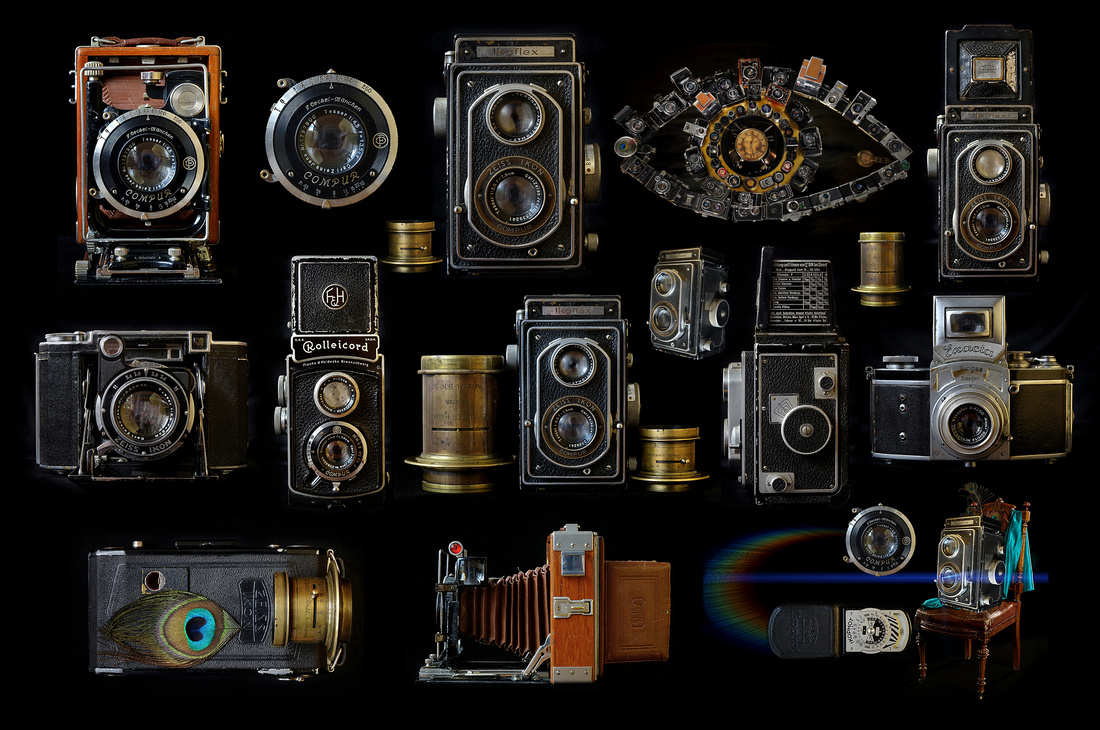
"Mastering Shutter Speed: Essential Tips and Tricks for Clear and Sharp Photographs"
History of the Shutter:
The evolution of the camera shutter is a fascinating story that spans more than a century and a half. It's a story that begins with simple pinhole cameras and flaps and ends with today's complex focal plane and in-lens shutters. Here is a detailed timeline of the inventors and contributors that made it possible.
5th century BC: Chinese philosopher Mo-Ti records the projection of an image in a darkened room called the 'Locked treasure room.
4th century BC: Aristotle expounds similar optical theories.
15th century AD: Leonardo Da Vinci, during the Renaissance, describes the Camera Obscura.
17th century AD: German astronomer Johannes Kepler called this device the 'Camera Obscura.'
1727: German professor Johann Heinischulze discovered that silver nitrate darkened on exposure to light.
1826: French lithographer Joseph Nicéphore captured an image through an eight-hour exposure onto coated glass, the first permanent photographic image.
1839: Louis Daguerre developed a photographic process, producing the first commercially successful system.
1845: The first recognizable shutter mechanism, a guillotine-type system, is developed by French physicists Fizeau and Fucault to photograph the sun.
In the 1860s: William English created a system that took the guillotine principle and added an adjustable aperture, the first focal plane shutter.
1888: George Eastman receives a patent for the camera's shutter and the trademark for the Kodak name.
The 1890s: Mechanical shutters with spring-driven mechanisms became common in the industry, replacing the pneumatic timer that was previously used.
1913: The first in-lens shutter, the Compur shutter, is developed by Friedrich Deckel.
The 1930s: Focal plane shutters are developed capable of shutter speeds as fast as 1/1000th of a second.
The 1950s: Electronic shutters appear in cameras, starting with the Kodak Ektra.
The 1960s: Focal plane shutters become more popular and versatile with the introduction of horizontally-traveling cloth shutters.
The 1970s: The first electronic focal plane shutter, the Honeywell Electronic Shutter, is introduced.
The 1980s: Shutter speed control is integrated with auto-exposure systems in cameras.
The 2000s: Electronic shutter technology improves, allowing shutter speeds as fast as 1/8000th of a second.
From the early pinhole cameras and simple flaps or curtains to the complex focal plane and in-lens shutters of today, the evolution of the camera shutter has been a critical component in the advancement of photography. It's interesting to note the different advantages and drawbacks of each type of shutter and how they've been used to create different effects in photography.
It's also worth noting that while electronic shutters are now widely used in modern digital cameras, the principles behind mechanical shutters still apply. Whether the focal plane shutter's fast action or precise control of the in-lens shutter, the shutter remains a critical component in capturing the perfect image.
Overall, the evolution of the camera shutter is a testament to the ingenuity and creativity of photographers and inventors over the years, and it's exciting to see how this technology will continue to evolve in the future.
The Modern Shutter:
Most modern digital cameras use electronic shutters, but the principles behind mechanical shutters still apply. The two most common mechanical shutters are the focal plane shutter and the in-lens shutter.
In conclusion, the evolution of the camera shutter has been a critical component in the advancement of photography, and it's a testament to the ingenuity and creativity of photographers and inventors over the years. The different types of shutters have unique advantages and drawbacks, and understanding these differences can help photographers achieve different effects in their work. As technology evolves, it will be exciting to see how the camera shutter advances and pushes the boundaries of what is possible in photography.
The camera shutter is a mechanical or electronic device that controls the amount of light that enters the camera during a photograph. It works by opening and closing a barrier in front of the camera's sensor or film, allowing light to enter and creating an image.
The shutter is an essential camera component, as it helps control the image's exposure. By adjusting the shutter speed, photographers can control how much time the sensor or film is exposed to light, which can affect the brightness and sharpness of the image. For example, a fast shutter speed can freeze a moving subject in a sharp image, while a slower shutter speed can create a blurred effect or capture more light in low-light situations.
Here is a basic breakdown of the mechanics of a modern camera shutter:
- Shutter Button: The shutter button is the mechanism that initiates the shutter's movement. When the photographer presses the button, it triggers the opening and closing of the shutter.
- Shutter Blades: The shutter blades are the components that physically block and unblock the camera sensor or film. They are usually made of metal or cloth and can move up and down, side to side, or in a circular motion, depending on the type of shutter.
- Shutter Curtain: The shutter curtain is the barrier that blocks light from entering the camera when the shutter is closed. It is usually made of cloth or plastic and designed to move quickly and smoothly, allowing fast shutter speeds.
- Shutter Motor: In some modern cameras, an electronic motor controls the movement of the shutter blades and curtain. This gives the photographer more precise, consistent shutter speeds and faster shooting rates.
- Shutter Speed Dial: The shutter speed dial is the component that allows the photographer to adjust the speed at which the shutter opens and closes. You can manually control the shutter to create various photographic effects.
The camera shutter is critical in controlling the exposure and creating the perfect image. The mechanics of the shutter have evolved to become more precise and reliable.
By the numbers a short list of typical shutter speeds and when to use them in different photography situations:
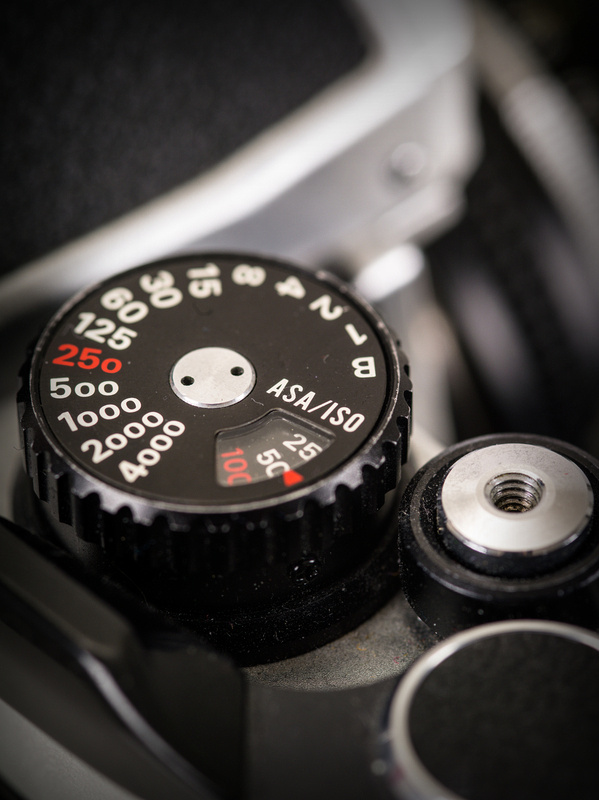
- 1/8000 - Use this speed for freezing action in bright light conditions, such as sports or wildlife photography, or for creating a shallow depth of field in bright light.
- 1/4000 - Use this speed for freezing action in bright light conditions, such as sports or wildlife photography, or for creating a shallow depth of field in bright light.
- 1/2000 - Use this speed to freeze fast-moving subjects in moderate light conditions or create a shallow field depth in moderate light.
- 1/1000 - Use this speed to freeze fast-moving subjects in moderate light conditions or create a shallow field depth in moderate light.
- 1/500 - Use this speed to freeze movement in low light conditions or create a shallow field depth in low light.
- 1/250 - Use this speed for freezing movement in low light conditions or creating a shallow field depth in low light.
- 1/125 - Use this speed to capture everyday scenes in moderate light or create a moderate depth of field.
- 1/60 - Use this speed to capture everyday scenes in moderate light or create a moderate depth of field.
- 1/30 - Use this speed to capture still subjects in low light or create a deep depth of field.
- 1/15 - Use this speed to capture still subjects in very low light or create an intense field depth.
These are just general guidelines, and the appropriate shutter speed will depend on the lighting and movement conditions you're working on and the photograph's overall creative look and feel. It's also important to remember that shutter speed is only one exposure control component and should be used with other settings such as aperture and ISO.
In Conclusion:
You're already well aware of the power of photography. How a single image can capture a moment, evoke emotion, and tell a story is nothing short of magic. But, to unlock that magic, you must know your camera's capabilities and be willing to take risks, experiment, and, above all, keep shooting.
Don't let the fear of failure or the limitations of your equipment hold you back. You are the creator of your experience, and the only thing stopping you from creating amazing photographs is yourself.
So, push yourself to explore new perspectives, take risks, and see the world in a new light. Embrace your creativity and your passion for photography. Learn everything you can about your camera and its unique features, then use that knowledge to create something truly memorable.
Ultimately, it's not about your camera or your gear. It's about your passion, your vision, and your willingness to take that passion and vision and turn it into something extraordinary. You can create images that inspire, evoke emotion, and tell a story.
So, my friends, I urge you to use that power to create something unforgettable. Get out there, keep shooting, and remember, the only limit is the one you set for yourself.
Thank you for stopping by.
Sincerely,
Randy
]]>
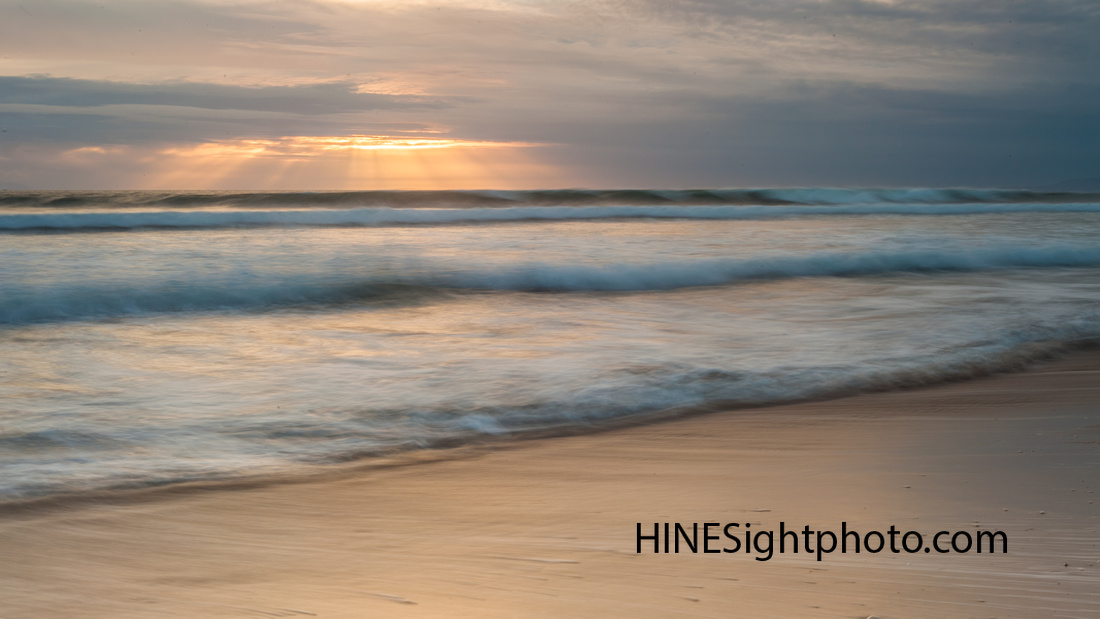
A brief history of Photography:
Photography is a fascinating art form that has come a long way since its inception. Its history dates back to the early painters who sought to capture the world around them through their artistic skills. However, in the early 19th century, technological breakthroughs were made for capturing images with a camera.
Joseph Nicéphore Niépce created the first authentic photographic image in 1826. He used a camera obscura and a photosensitive plate to capture the image of a view from his window. However, it was not until Louis Daguerre invented the daguerreotype in 1839 that Photography became a practical and widely-used medium.
The daguerreotype was a revolutionary invention, producing images that were much more detailed and precise than any painting could achieve. It allowed photographers to capture and preserve images of their lives, surroundings, and people. As a result, the early daguerreotype portraits are some of the most moving images of the time, showing families, friends, and loved ones in a way that had never been possible before.
Photography continued to evolve throughout the 19th century. Improvements in technology led to the development of new processes such as the ambrotype, tintype, and wet plate collodion. These processes allowed photographers to create images with greater clarity and detail and helped to popularize Photography as an art form.
The advent of digital Photography in the 21st century has brought about a new era of creativity and accessibility. Today, anyone with a smartphone can capture and share images. But even with all the technological advances, the urge to document and create images of life remains the same as it was in the early days of Photography.
Photography has always been about capturing the beauty and complexity of the world around us. It is an art form that allows us to share our experiences, preserve our memories, and connect with others in a way that words alone cannot. From the early painters to the technical marvels of the present day, Photography has always captured and shared the world as we see it.
The Basics:
- Camera Settings:
Aperture, shutter speed, and ISO are the three main camera settings you need to understand to take great photos. Here's a simple breakdown:
- Aperture: This refers to the opening in the lens through which light passes. A smaller aperture (higher f-number) will give you a wider depth of field, meaning that more of the image will be in focus. A larger aperture (lower f-number) will give you a narrower depth of field, which can be great for portraits or other situations where you want the background to be blurred.
- Shutter speed refers to how long the camera's shutter is open. It's measured in seconds or fractions of a second. A faster shutter speed will freeze motion, while a slower shutter speed can create a sense of motion blur.
- ISO: This refers to the camera's sensitivity to light. A higher ISO setting will allow you to shoot in low light conditions, but it can also introduce noise (graininess) into the image. A lower ISO setting will give you a cleaner image, but it may require more light to get a properly exposed photo.
2. Composition:
Composition refers to the arrangement of the elements within the photo's frame. Here are some tips for creating a visually appealing image:
- Rule of thirds: Divide the frame into thirds vertically and horizontally, and place your subject at one of the points where the lines intersect.
- Leading lines: Use lines within the image to draw the viewer's eye to the subject.
- Balance: Create a balanced composition by placing the subject off-center and balancing it with other elements in the frame.
3. Lighting:
Understanding how to work with light is critical to taking great photos. Here are some tips for getting the most out of natural and artificial light sources:
- Natural light: Look for soft, diffused light (such as on an overcast day) for even lighting across the subject. Use the direction of the light to create depth and dimension in the image.
- Artificial light: Use a flash or other light source to add light to a scene or subject. Consider the color temperature of the light (whether warm or cool) and how it will affect the overall look of the image.
Understanding camera settings, composition, and lighting is essential for taking great photos. By mastering these fundamental concepts, you can take your Photography to the next level and create visually stunning and technically sound images.
Congratulations! You've taken the first steps on an exciting journey into the world of Photography. As you've learned, mastering the basics of camera settings, composition, and lighting is essential to taking great photos. But remember, Photography is more than just technical know-how. It's an art form that allows you to capture and preserve the world around you, creating memories that will last a lifetime.
So keep shooting, experimenting, and learning. Every photo you take is an opportunity to improve your skills and create something beautiful. Don't be afraid to try new things and take risks. Some of the best photos come from unexpected moments or unconventional techniques.
And remember, Photography is not just about the result. It's also about the process. Taking the time to observe the world around you and find beauty every day is an enriching experience that can change how you see the world.
So have fun, be curious, and keep exploring. The world of Photography is vast and full of possibilities. Who knows, you might discover your unique style or perspective. So until next time, keep shooting and creating memories that will last a lifetime.
Thank You,
Randy
]]>
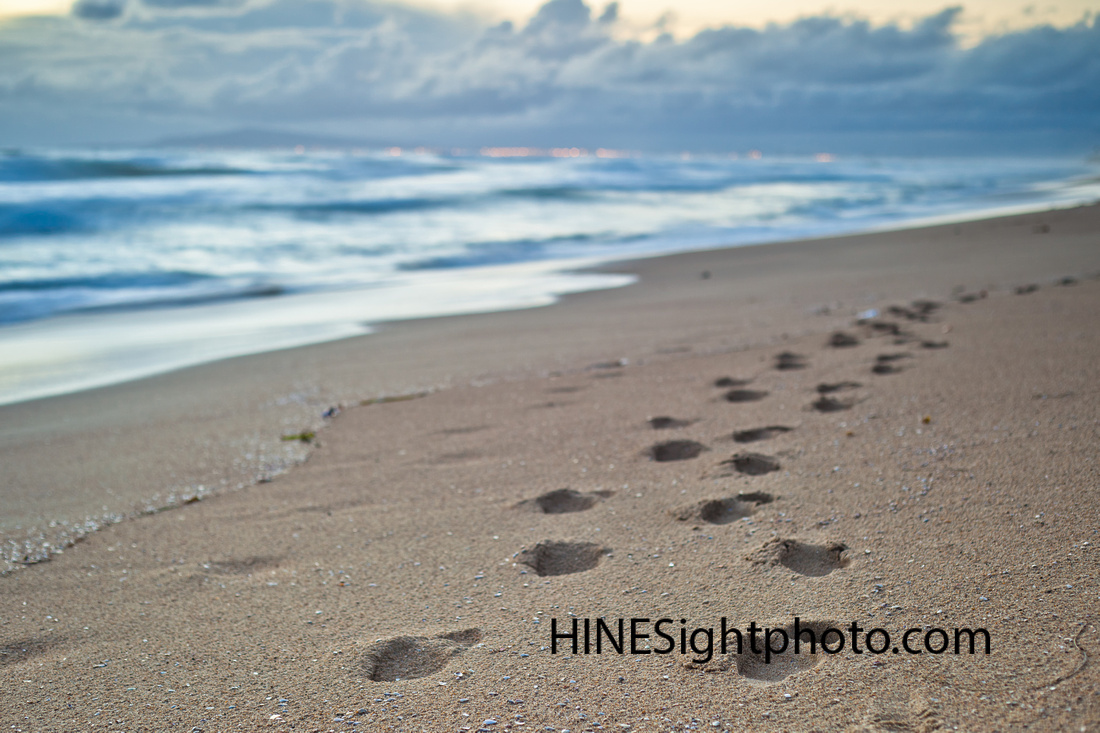
"The Secret to Stunning Photos: Mastering the Art of F-Stop"
Photography is an art that has captured memories and emotions for centuries. With technological advancements, the modern camera has become a powerful tool for photographers to create images that tell a story. However, one of the most important aspects of photography that new photographers often overlook is the understanding of F-Stop. This guide will break down the terms and numbers of F-Stop, the history of its creation, why it's essential in photography, and a step-by-step guide to understanding and using F-Stop in your photography.
What is F-Stop?
F-Stop is a numerical value representing the size of your camera lens's aperture. The aperture is the opening in the lens that allows light to reach the camera's sensor. The F-Stop number is a ratio of the focal length to the diameter of the aperture. The larger the F-Stop number, the smaller the aperture and the less light enters the camera. On the other hand, the smaller the F-Stop number, the larger the aperture and the more light enters the camera.
The History of F-Stop
In the early days of photography, cameras used manual aperture control, and the concept of F-Stop had its roots in this process. Photographers would adjust the size of the aperture to control the amount of light that entered the camera. This was done by physically changing the aperture size, using a series of interchangeable aperture plates, or adjusting the size of the aperture blades within the lens itself.
To understand how this worked, let's imagine that we're back in the days of film photography, and we're about to take a picture. Our camera is loaded with film, and the lens cap covers the front of the lens. To expose the film, we would take off the lens cap, allowing light to enter the camera and hit the film.
However, this process would often result in an overexposed image, as too much light would enter the camera. To control the light entering the camera, photographers would use a set of aperture plates or adjust the aperture blades within the lens.
The aperture plates were circular pieces of metal or glass with a hole of varying sizes in the center. The photographer would choose the aperture plate with the appropriate size hole based on the amount of light in the scene and the desired depth of field. The aperture plate would then be placed in front of the lens, controlling the size of the aperture and the amount of light entering the camera.
The aperture blades within the lens worked similarly, but instead of using interchangeable aperture plates, the size of the aperture could be adjusted directly. In addition, the aperture blades were arranged in a circular shape and could be adjusted to create a larger or smaller opening.
In both cases, the size of the aperture was expressed as an F-Stop value. The F-Stop value was calculated by dividing the lens's focal length by the diameter of the aperture. The larger the F-Stop value, the smaller the aperture, and the less light entering the camera. Conversely, the smaller the F-Stop value, the larger the aperture and the more light entering the camera.
Manually controlling the aperture was time-consuming and required much technical skill, but it was the only option for early photographers. As photography technology advanced and cameras became more automated, adjusting the aperture became more manageable. Still, the concept of F-Stop remains as relevant today as it was in the early days of photography.
Why is F-Stop Essential in Photography?
F-Stop is essential in photography because it controls the amount of light that enters the camera, affecting the image's exposure. Proper exposure is crucial in creating images that accurately represent the scene in front of the camera. The F-Stop also affects the depth of field in an image, which is the area of the image that is in focus. Therefore, a more significant F-Stop number will result in a smaller aperture, resulting in a more significant depth of field and a sharper image. On the other hand, a smaller F-Stop number will result in a larger aperture, resulting in a smaller depth of field and a more shallow focus image.
Field and a brighter exposure, while a smaller aperture (more significant F-Stop number) will result in a deeper depth of field and a darker exposure. When changing the F-Stop, consider the following reasons:
- It is changing the Exposure: When the amount of light in the scene changes, it's necessary to adjust the F-Stop to maintain proper exposure. For example, a lower F-Stop number in a dimly lit scene will allow more light into the camera, resulting in a brighter exposure. On the other hand, in a brightly lit scene, a higher F-Stop number will reduce the amount of light entering the camera, resulting in a darker exposure.
- Controlling the Depth of Field: The F-Stop also affects the depth of field in an image, which is the area in focus. A more significant F-Stop number will result in a deeper depth of field, which is ideal for landscape or architectural photography. A smaller F-Stop number will result in a shallower depth of field, which is ideal for portraits or macro photography.
- Blurring the Background: A shallow depth of field can also isolate the subject of the image and blur the background. It can help draw the viewer's attention to the subject and create a more dramatic image.
- Creating a Sense of Distance: A deeper depth of field can also be used to create a sense of distance in an image. For example, in a landscape image, a deeper depth of field will keep the foreground and background in focus, creating a sense of depth in the image.
In conclusion, photography is filled with endless opportunities to create, explore, and express your vision. Learning and mastering the concept of F-Stop is just one step in your journey as a photographer. With each shutter's click, you can capture a moment and turn it into a work of art.
F-Stop is a tool that, when used correctly, can bring your images to life and allow you to tell your story uniquely and powerfully. In addition, it is a tool that can help you control the exposure and depth of field in your images, allowing you to create dramatic pictures full of emotion.
So, take the time to learn and understand F-Stop. Experiment with different settings and see how they affect your images. Feel free to try new things and push the boundaries of what is possible. And most importantly, remember that we don't take pictures. We make them. So, keep shooting, and never stop exploring the world of photography.
Thank You,
Randy
]]>

Why Learn Manual Mode?
Learning manual mode is essential to taking creative control of your images. When in manual mode, you can adjust the camera settings to suit the scene you photograph. For example, if you're taking a photo of a fast-moving subject, you can adjust the shutter speed to freeze the motion. If you're taking a photo in low light, you can adjust the ISO to make the image brighter. Another advantage of manual mode is that you have complete control over the exposure of your images. In auto mode, the camera can make decisions you may disagree with, such as underexposing a scene to avoid blown-out highlights. However, you have the final say on how you choose to expose the scene in manual mode.
Finally, manual mode is essential for anyone who wants to take their photography to the next level. Learning manual mode is a must if you're serious about advancing your photography skills. It will give you a deeper understanding of cameras and help you become a more confident and skilled photographer.
Now that you understand the importance of manual mode let's look at the three key camera settings: f-stop, shutter speed, and ISO.
F-Stop
The f-stop, also known as the aperture, controls how much light enters the camera. Think of it like the size of a window in your camera lens that lets light in. The f-stop is expressed as a number, such as f/2.8 or f/8.
A lower number, like f/2.8, means a wider aperture, which lets in more light. This is good for low-light situations or when you want a shallow depth of field, meaning a blurred background. Conversely, a higher number, like f/8, means a smaller aperture, which lets in less light. This is good for bright conditions or when you want a deeper depth of field, meaning more of the image is in focus.
So imagine you're taking a picture of a person in a park on a sunny day. You might want a deeper depth of field so that both the person and the background are in focus so that you choose a higher f-stop like f/8. But if you're taking a picture of a concert at night, you might want a shallow depth of field so the performer is in focus and the background is blurred so that you choose a lower f-stop like f/2.8.
Shutter Speed
The evolution of camera technology has dramatically impacted the control and creative possibilities of shutter speed. In the early days of photography, cameras had mechanical shutters that were slow and limited in their speed capabilities. With the advancement of technology, electronic shutters were introduced, which allowed for faster and more precise shutter speeds. More recently, mirrorless cameras have made even more significant improvements in shutter technology. Instead of using a physical mirror to direct light to the viewfinder, mirrorless cameras use an electronic viewfinder. This has allowed for the introduction of the silent electronic shutter, which is nearly silent and has no physical vibration, allowing for even sharper photos.
Why control the shutter speed in manual mode? By having control over the shutter speed, you can effectively convey a sense of motion or freeze motion in your images. This can significantly impact the mood and storytelling aspect of your photos. For example, a slow shutter speed can create a sense of movement and flow, while a fast shutter speed can freeze a moment in time and make it appear sharp and still.
In manual mode, you have the ability to experiment with different shutter speeds to see what effect it has on your photos. This is where your creativity can truly shine and allow you to capture unique and visually stunning images.
In short, the evolution of shutter technology has given photographers more control and creative options when it comes to capturing motion in their images. Understanding and controlling shutter speed in manual mode can significantly enhance your photography skills, whether you're freezing fast-paced action or conveying a sense of movement. Shutter speed is often expressed in fractions of a second, such as 1/30 or 1/1000. The number on the right side of the fraction is the denominator and represents the length of time that the shutter is open. So, for example, a shutter speed of 1/30 means that the shutter is open for 1/30th of a second.
It's important to note that the denominator number directly affects the amount of light that enters the camera. A larger denominator means a longer shutter speed and more light entering the camera, while a smaller denominator means a shorter shutter speed and less light entering the camera.
Here are a few standard shutter speed numbers and what they are commonly used for:
- 1/30: This slow shutter speed is often used to capture motion and create a sense of movement in photos. For example, shooting a waterfall with a slow shutter speed can result in a smooth, silky appearance of the water.
- 1/60: This is a common starting point for many photographers when shooting in low-light conditions. It's fast enough to avoid camera shake and slow enough to allow for some motion blur.
- 1/125: This is a good starting point for outdoor daytime photography when there is ample light. It's fast enough to freeze most action and is also an excellent general-purpose shutter speed.
- 1/500: This is a fast shutter speed that is often used to freeze fast-moving action, such as in sports or wildlife photography.
ISO
ISO is a setting on your camera that determines how sensitive the camera's sensor is to light. The higher the ISO number, the more sensitive the sensor is to light, and the lower the ISO number, the less sensitive the sensor is to light.
In the days of film photography, ISO was determined by the type of film used. For example, a photographer might use ISO 100 film for bright, sunny days and ISO 800 film for low-light conditions. Today, with digital cameras, ISO can be adjusted in real-time to adapt to changing lighting conditions.
In manual mode, having control over the ISO setting allows you to fine-tune the exposure of your images and achieve the desired look. For example, if you're shooting in a dimly lit room and need to use a slow shutter speed to let in more light, you can increase the ISO to compensate and prevent the image from becoming too dark.
Here are a few common ISO numbers and what they are commonly used for:
- ISO 100: This is a low ISO setting that is often used in bright, sunny conditions. It produces the least amount of image noise (graininess) and is a good starting point for outdoor photography.
- ISO 400: This is a medium ISO setting that is often used in outdoor photography during overcast days or indoor photography with good lighting.
- ISO 1600: This is a high ISO setting that is often used in low light conditions or for fast-paced action photography. It produces more image noise but allows for faster shutter speeds in low light.
Conclusion
As a new photographer, you embark on a beautiful journey filled with adventure, creativity, and self-discovery. Using your camera's manual mode is an essential step on this path, as it allows you to take control of your images and bring your unique vision to life.
Through practice and experimentation, you will discover the power of f-stop, shutter speed, and ISO and how they work together to create stunning images. As you hone your skills and develop your style, you will find that photography is a powerful way to capture and preserve memories, tell stories, and express your innermost feelings.
But, most importantly, you will find that photography is a journey of growth and self-discovery. You will grow and discover new things about yourself as you learn new techniques. You will find that photography has the power to bring you joy, peace, and fulfillment like nothing else can.
So, take a deep breath and embrace the journey ahead. Remember, there is no destination, only the journey itself. With each click of the shutter, you will become a better photographer and, more importantly, a better person.
Just keep photographing, and soon your pictures will speak a thousand words. So until next time, take care and keep creating beautiful memories.
Thank You,
Randy
]]>
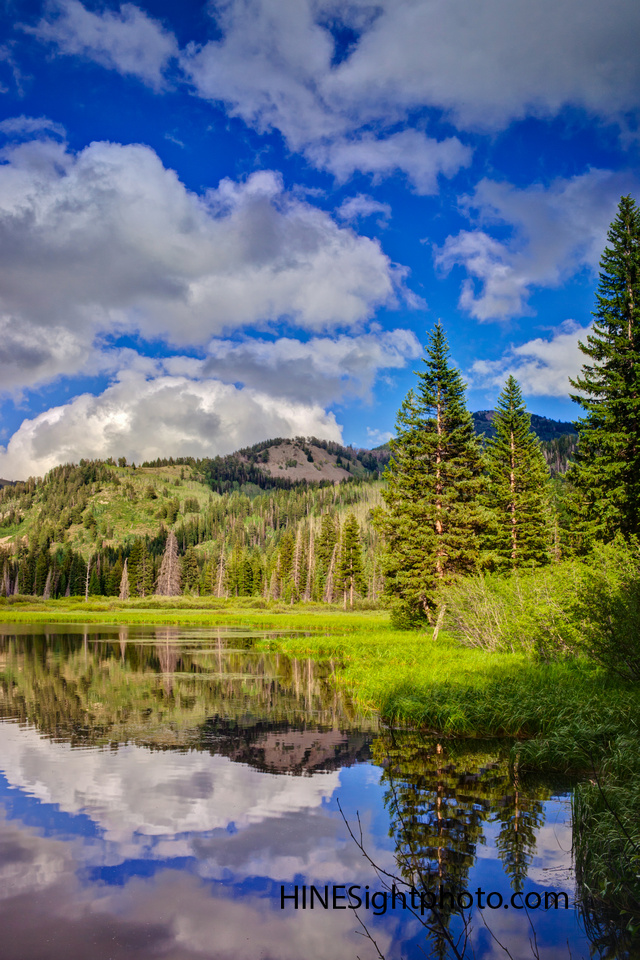
Photography, a captivating art form, goes beyond the boundaries of pricey gear. As a devoted photography teacher, the essence of this craft lies in the photographer's talent and skill. It's easy to assume that state-of-the-art, costly equipment is essential for success, but that's far from the truth. While high-end gear offers particular advantages in some situations, it doesn't guarantee success or improvement.
As you embark on your photography journey, focus on learning, mastering, and applying new skills. Your time and dedication to honing your craft, exploring diverse techniques, and experimenting with various styles are precious. In addition, taking photos as frequently as possible is vital, as it's through constant practice that you'll see real growth and progress in your abilities.
Photography's evolution isn't linear; it requires determination and persistence. To move forward, face challenges and step out of your comfort zone. For instance, if you're mainly into landscape photography, why not try street photography? By delving into new genres and environments, you'll broaden your skillset and deepen your understanding of photography's many aspects.
As you navigate the unexplored paths of photographic expression, you'll inevitably encounter difficulties and make mistakes. However, through these experiences, you'll learn the most valuable lessons. Embrace these opportunities to grow and adapt, refining your skills with each shutter release. In doing so, you'll discover that becoming a better photographer isn't about the cost of your equipment but your ability to tap into your creativity and push your knowledge's boundaries.
In conclusion, while expensive gear may have some benefits, there are other factors in determining your photo's quality. So instead, focus on expanding your horizons, practicing diligently, and challenging yourself to try new styles and techniques. By doing this, you'll find that your growth as a photographer isn't limited by your equipment but fueled by your passion, commitment, and desire to learn. Remember, the path to becoming a skilled photographer is continuous and ever-changing, and through your dedication to this journey, you'll unlock your true potential, creating captivating images that deeply resonate with your audience.
Sincerely,
Randy
 Can you see shapes? I'm going to date myself and say remember the old toy Colorforms. Photography is Colorforms. Can you see the vertical and horizontal forms and figures in a scene? Learning to see shapes will help you dramatically with composition and give you the answer if your image should be vertical or horizontal. In this black and white picture of the Huntington Beach Pier, I went with horizontal view. When shooting landscapes of the beach, the horizon will most likely force to keep the camera horizontal. Seeing shapes in photography is not automatic; if you stick with it like the Colorforms, it will become a habit. So get out there and shoot some shapes.
Can you see shapes? I'm going to date myself and say remember the old toy Colorforms. Photography is Colorforms. Can you see the vertical and horizontal forms and figures in a scene? Learning to see shapes will help you dramatically with composition and give you the answer if your image should be vertical or horizontal. In this black and white picture of the Huntington Beach Pier, I went with horizontal view. When shooting landscapes of the beach, the horizon will most likely force to keep the camera horizontal. Seeing shapes in photography is not automatic; if you stick with it like the Colorforms, it will become a habit. So get out there and shoot some shapes.]]>

You already have a job, did you know that? If you have a smartphone, guess what you are a photographer. Right now, there are over 3.5 billion smartphone
users in the world today. 3.5 billion photographers is an incredible number. Now, not all you get paid for pictures. Even Ansel Adams was a musician before he was a photographer. The only way you get better is to practice, so get out there and start shooting.
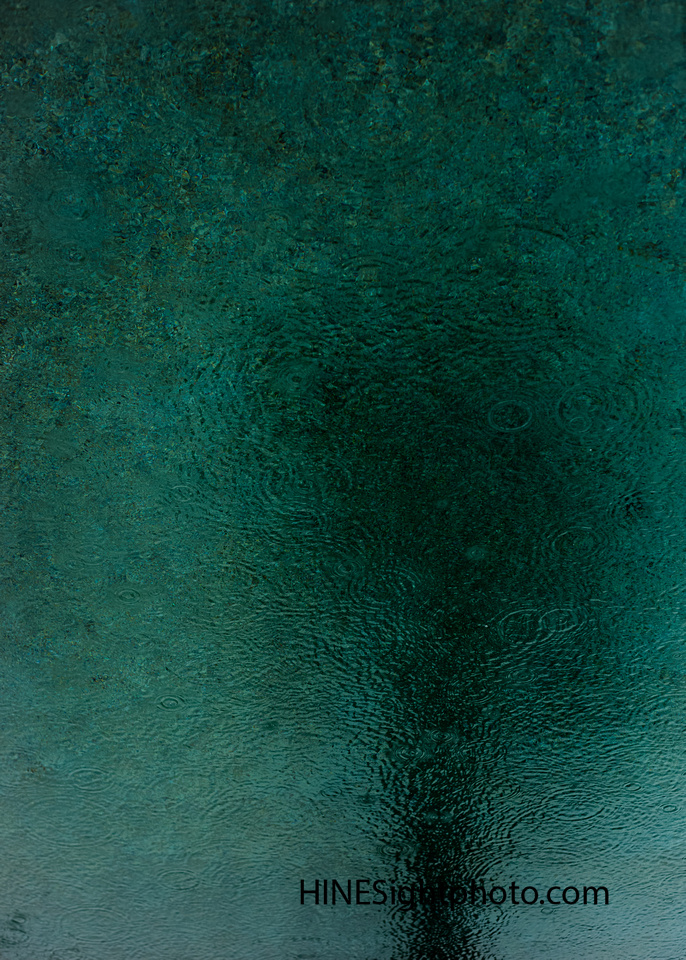
I often wonder if I'm a jack of all trades in photography and master of none. The problem is I do genuinely love the art and have trouble focusing on one niche to master. Everywhere I go, I'm putting together compositions in my mind even when I don't have a camera in hand. Abstract photography can be a bit subjective. Is it just macro photography of objects so close you can not recognize what it is? Or is it overexposed images and out of focus or with lots of motion blur? On many occasions, I have headed out of the house, intending to capture some fascinating abstract photos. I often thought I had a great day photographing and then quickly realized that I have nothing remotely interesting after uploading my images to edit. We will all have off days behind the camera and great ones, don't let those days get to you. Remember, keep on shooting.
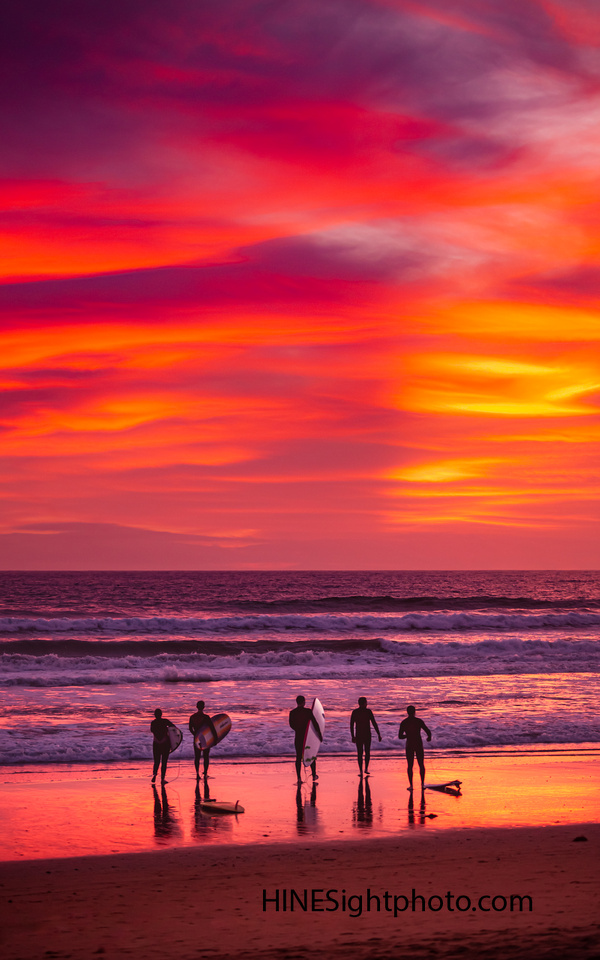
I'm guilty, I admit it. I have over-processed and overused filters on some of my photography. As post-processing apps and software continue to grow and the technology improves, you need to ask yourself too much. It's an easy answer if you're a photojournalist; you cannot alter photos for documentary use. As for the rest of us, especially landscape photographers, I have seen so many over-processed images. It is like counting the grains of sand on a beach. You get the picture or the over-filtered smartphone picture. I get it. Everyone wants that wow factor and that like on social media; however, if you're going to get serious about photography or even get better at making images. There is a fine line between over-processed pictures and perfect photos, and it's up to you to find a balance. If you genuinely want to get better, try joining one of the big stock photo agencies. Just search for stock photos, and you will find dozens of websites. Let me warn you if you are not a professional photographer. It's going to be a humbling experience, don't quite I guarantee you will be a better and more creative photographer in the end. Get out there and keep on shooting!

Remember when you did nothing after taking a picture. Before digital cameras, the film camera was all there was, and unless you had a dark room, you took your film to a developer who would process and crop your pictures. Now, most people never even edit their digital images. They fill up their SD card, compact flash, and smartphone and then dump all the photos onto a computer, and hopefully, they backed up their pictures. Then clear up all the storage and begin the cycle again. Who has the time to edit, right? In the film days before digital, the average cost to develop a film roll was around $5. If you were to hire a digital photo editor today, the average price is currently about $50 to $150 an hour; so you probably will not hire an editor unless you are professional photography with a heavy workload. Question: what do you do with all those digital images now? Well, not only are you a photographer, but you are also an editor. Have you ever deleted an image? Then you are an editor, and now the pictures you keep, why do you save them? Because you love your photos, so why not process them, develop them, crop them, and make them even better. Now print it, frame it, and hang it on your wall. You took the time to edit and process the image, so show it off and be proud. Whether you are a smartphone or DSLR photographer, there is a software program to help you process and develop your digital images. Now do some post-production work, make your pictures into art, good luck and keep on shooting.
HINESightphoto seeing the future of photography today
]]>
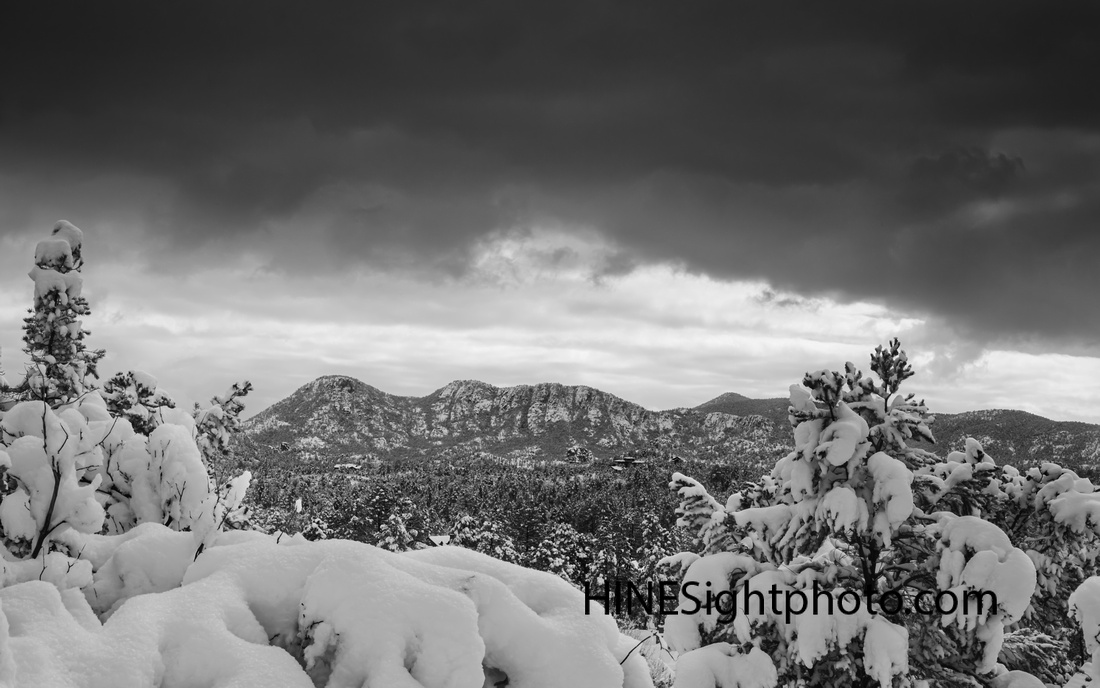 The classic winter black and white picture can have the potential to be a masterpiece. Today most modern digital cameras have a monochrome setting. Switching over to this setting might make it easier to set up wintertime compositions. Once again, it's not always the landscape subject that has to be the subject, every time. Yes, if you made a trip to Yosemite, by all means, photograph Half Dome and El Capitan; however, when you're walking through the valley and see some fantastic lighting with a lot of contrast, set up a composition and make some pictures. This black and white picture is of the Granite Dells in Payson, Arizona. Now find some winter wonderland light, and get out there and start shooting.
The classic winter black and white picture can have the potential to be a masterpiece. Today most modern digital cameras have a monochrome setting. Switching over to this setting might make it easier to set up wintertime compositions. Once again, it's not always the landscape subject that has to be the subject, every time. Yes, if you made a trip to Yosemite, by all means, photograph Half Dome and El Capitan; however, when you're walking through the valley and see some fantastic lighting with a lot of contrast, set up a composition and make some pictures. This black and white picture is of the Granite Dells in Payson, Arizona. Now find some winter wonderland light, and get out there and start shooting.]]>
KEY TAKEAWAYS
- Aperture refers to how much light goes through the lens of a camera.
- Remember, Aperture and F-stop are the same. Aperture is the name for all the f-stops.
- Each f-stop starting with the lowest f1.4 will open the lens to its largest position to let in the most light yet give the most shallow depth of field. The highest f-stop, say like f22, will close the lens position to its smallest. Hence will let in much less light yet creating a considerable depth of field.
Understanding Aperture and F-Stop
With the knowledge of controlling the aperture, you will have the creative ability to choose the depth of field in your pictures. Let's step into the Aperture pool feet first. You are in the shallow end, two feet deep, so this would be f2 on your camera, not much depth of field, right. Your subject will be in focus, and your background soft and out of focus. As you move deeper into the aperture pool, you are now four feet deep, f4 on your camera, even more depth of field. You move to the deep end F8, F9, and F10 in the aperture pool. You are treading water now, and if you are shooting the sunset, you will need a tripod at these higher f stops to keep everything in your viewfinder in focus. Remember, once you get to the f stops in the double digits, the opening in your lens narrows significantly, letting in less light. Which will force you to slow your shutter speed and maybe even increase your ISO. Now, this is just one leg of the photography knowledge tripod. You will need shutter speed and ISO, and you will complete the tripod's three legs and know what it takes technically to make an impactful image.
Why make a change in the aperture of your camera?
Well, this is the big question? Peter Adams once said, "Great photography is about the depth of feeling, not the depth of field." It's now your choice which f-stop you will decide to use. Seeing emotions build in front of your viewfinder is what makes a great photograph. However, it is your f-stop that will direct your audience on where to look at your pictures. For example, with portrait photography, you will most likely use a lower f-stop, somewhere between f1.4 to 4.5. In this range, the background behind the subject will be soft and out of focus, bokeh. Just remember, if you are shooting around f1.4, make it a priority to keep your subject's eyes sharp and in focus, which is good practice in any portrait. Let's jump to a higher f-stop something in the range of f11 to f22. Most landscape photographers live in this range. Just keep in mind if you are shooting sunrise or sunset at that magical time called the golden hour. You will need a tripod to support your camera so your image will stay in focus, and due to less light at these times, you will need to slow your shutter speed down to keep your exposure level correct. If you don't have a tripod, you can increase the iso on your camera.
Conclusion
Aperture is just controlling which f-stop you will choose and how much depth of field you would like to see in a picture. You are now the photographer, and you will find endless pages on the internet about photography rules. In the end, if you can capture an image that is interesting and captivating and you love it, that is all that matters.
]]>
